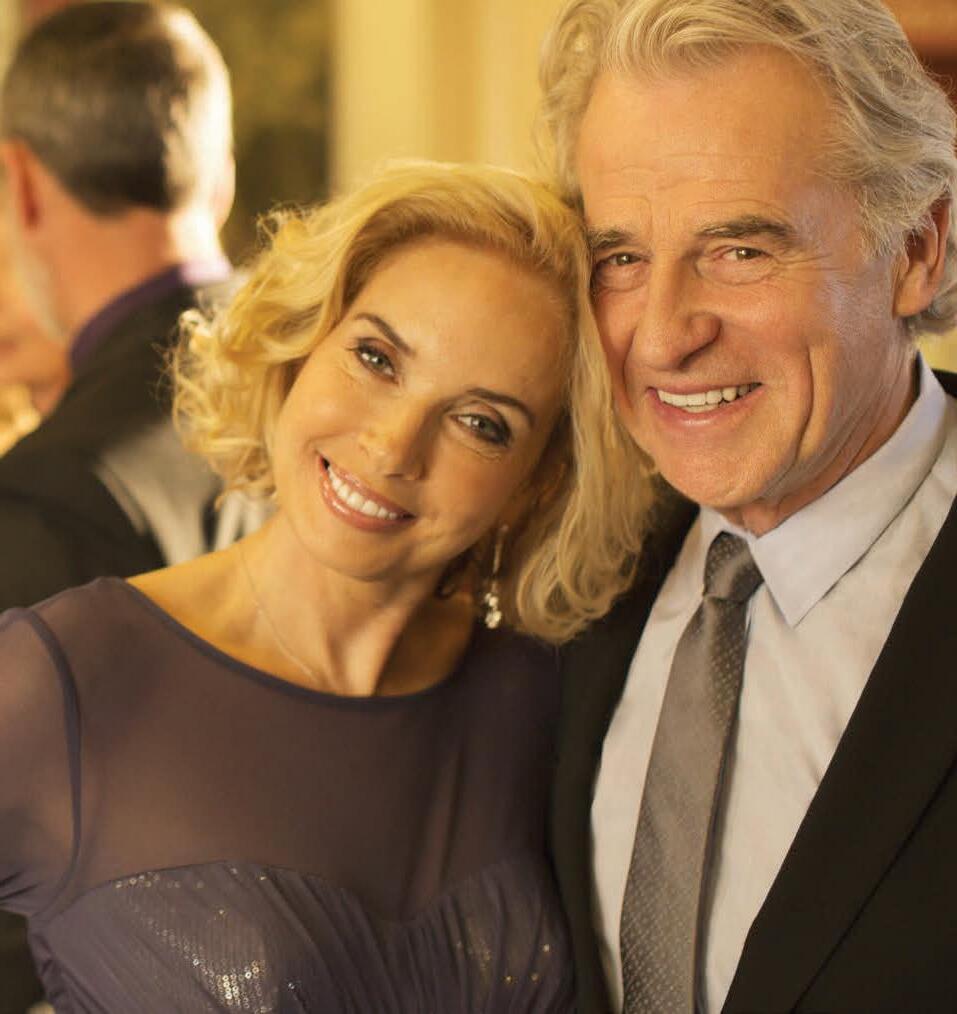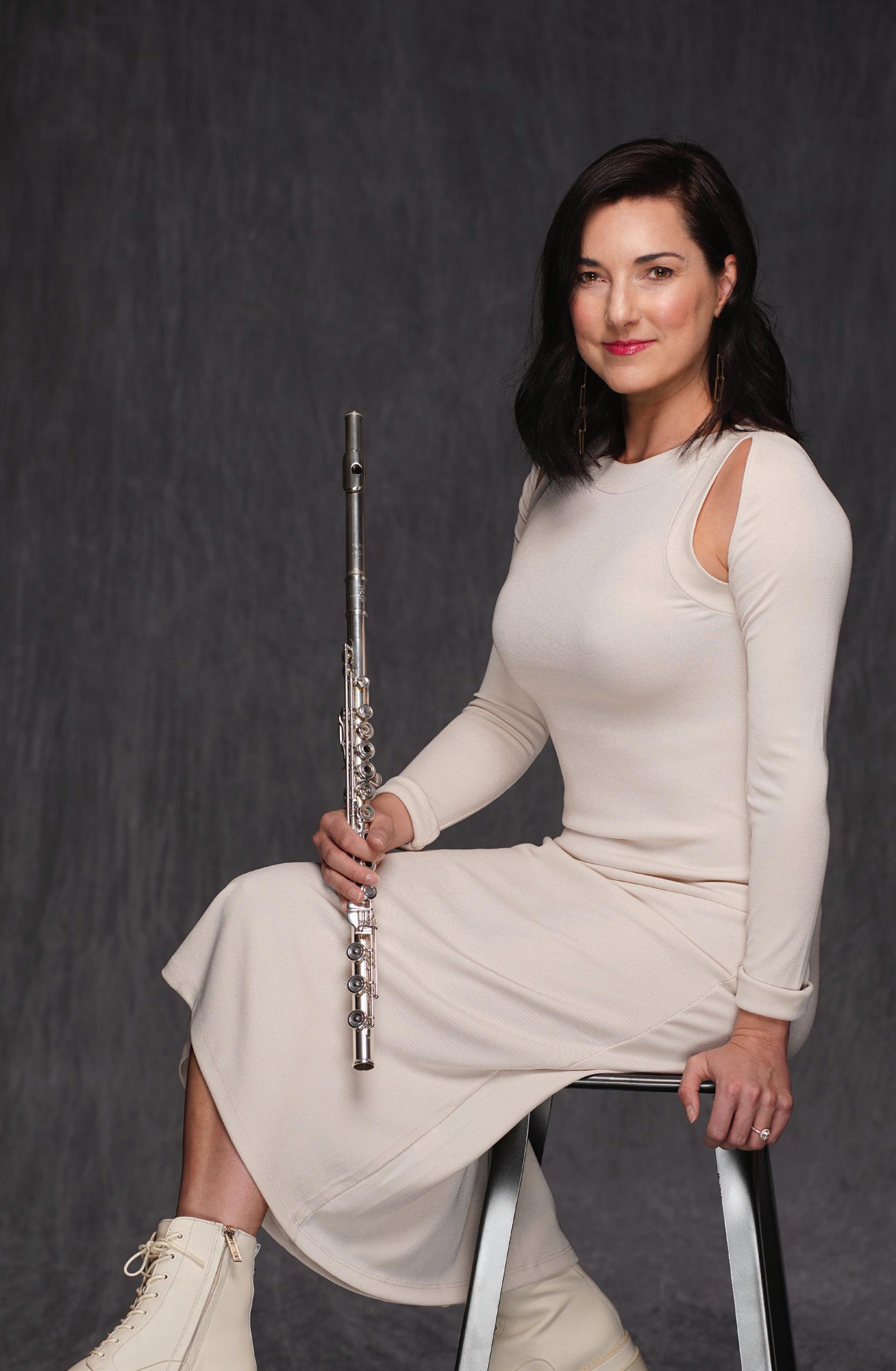













On behalf of the board, musicians, and staff of Utah Symphony | Utah Opera, it is our pleasure to welcome you to Maurice Abravanel Hall and today’s performance. We are so pleased that you have joined us for one of the finale concerts of Thierry Fischer’s remarkable 14-year tenure as Music Director of this outstanding orchestra. From collaborations with this year’s Artist-in-Association Emmanuel Pahud and our very own Tad Calcara and Lori Wike to stand-alone orchestral masterpieces by Messiaen and Mahler, these concerts are designed to showcase the excellence that Thierry and the musicians of the orchestra have achieved through their work together.
Under Maestro Fischer’s leadership, the Utah Symphony has become increasingly recognized as one of the nation’s top orchestras, offering artistic and educational experiences at the highest level. We are proudly part of the economy, artistic fabric, and cohesiveness of our growing community. Guided by our mission and values, we endeavor to build upon this great work of the past to invigorate and excite our audience members, expand our impact across our communities, and reach ever more people through the art we create.
BRIAN GREEFF Board of Trustees Chairman
p.s. If you haven’t already subscribed to the 2023–24 Season, be sure to check out the full line-up of concerts and benefits—including exclusive first access to tickets to our October 14th concert with violin virtuoso Itzhak Perlman! utahsymphony.org/ tickets/subscriptions/

This summer we hope you will “Escape into the Music” with USUO at the Deer Valley® Music Festival. The six-week summer concert series, which runs from June 30 through August 4, showcases the versatility of our orchestra musicians as they perform music ranging from classical to alternative rock alongside popular guest artists. Also watch for the Utah Symphony at outdoor community venues along the Wasatch Front in June and throughout the state during our Music Elevated Tour, August 7–12, and join us to enjoy free outdoor concerts set to backdrops of our state’s breathtaking landscapes.
Thank you again for being part of tonight’s musical experience. Your presence matters and we look forward to seeing you outdoors this summer and once again in the marvelous setting of Maurice Abravanel Hall for our 2023–24 Season.
Sincerely,

Go electric. Go anywhere. The BMW i4 Gran Coupe and BMW iX Sports Activity Vehicle® arrives with class-defining style and performance, game-changing sustainable materials, and innovative technology. They deliver far-reaching range and efficiency, with all the breathtaking power that define all BMWs. Experience our electrifying performance with a test drive of the Ultimate Driving Machine® today and see why BMW is the new electric standard.

Thierry Fischer has been Music Director of the Utah Symphony since 2009, has held the same position with the São Paulo Symphony since 2020, and took up his post as Music Director of the Orquesta Sinfónica de Castilla y León in September 2022.
In recent seasons he has conducted orchestras across the globe, notably the Cleveland Orchestra—where he returned this past autumn—also the Boston, Atlanta, and Cincinnati Symphonies; London Philharmonic; Royal Philharmonic; Oslo Philharmonic; Rotterdam Philharmonic; and Maggio Musicale Firenze among others.
Maurice Abravanel Chair,
Fischer closes his tenure in Utah with Mahler’s allembracing 3rd Symphony, featuring the women of the Tabernacle Choir. This follows on their recording together of Mahler’s 8th symphony (released in 2017 on Reference Records, after Mahler 1 in 2015 and a disc of newly commissioned works by American composers in 2015). In this farewell season he has also chosen to celebrate Messiaen’s music with a performance of Turangalîla and the release on Hyperion in 2023 of his Des canyons aux étoiles (directly inspired by the breathtaking landscape of Utah). After a transformative 14 years in Utah, including the orchestra’s visit to Carnegie Hall for the first time in 40 years, a Saint-Saëns cycle on Hyperion and many other highlights, Fischer becomes Music Director Emeritus in the 2023–24 Season.
While Principal Conductor of the BBC National Orchestra of Wales 2006–12, Fischer appeared every year at the BBC Proms, toured internationally, and recorded for Hyperion, Signum, and Orfeo. In 2012 he won the ICMA Award for his Hyperion recording of Frank Martin’s Der Sturm with the Netherlands Radio Philharmonic Orchestra and Chorus. His discography also includes a Beethoven disc with the London Philharmonic on the Aparté label.
Fischer started out as Principal Flute in Hamburg and at the Zurich Opera. His conducting career began in his 30s when he replaced an ailing colleague, subsequently directing his first few concerts with the Chamber Orchestra of Europe where he was Principal Flute under Claudio Abbado. He spent his apprentice years in Holland and was Principal Conductor and Artistic Advisor of the Ulster Orchestra 2001–06. He was Principal Guest of the Seoul Philharmonic 2017–20 and Chief Conductor (now Honorary Guest) of the Nagoya Philharmonic 2008–11.
Thierry Fischer is represented by Intermusica.

When I arrived in Utah in 2009, I could never have imagined the many exciting and fulfilling experiences the next 14 years would bring. I look back on playing my part in Utah’s rich cultural heritage with much gratitude: I remember the warm welcome you gave me and my wife Catherine as soon as we arrived; I commend the fantastic musicians of the Utah Symphony who have consistently surpassed my expectations and inspired me with their artistry; and I thank the Board and staff who unfailingly lead us to our greatest aspirations; and last but certainly not least, I want to express my appreciation for you, our audiences, who make our work possible and meaningful. Without you, our light would not shine as brightly as it does throughout the state.

It’s impossible to highlight only a few of the many rewarding projects we have done in the last 14 years. I’m proud of our commitment to commissioning and showcasing new works; proud of our state-wide education programs; and proud of the world-renowned artists we feature on our stages. I will never forget the opportunity to play music against the backdrop of some of Utah’s most spectacular scenery on our statewide tours, or the legacy we leave through our recordings. These memories will always be a source of great joy for me.
I encourage you to continue to support this marvelous institution. You have a community treasure in the Utah Symphony | Utah Opera, and I could not be prouder of the artistic heights we’ve reached together; they deserve to grow and blossom with new leadership on the podium and new experiences that will add to USUO’s legacy. I certainly cannot wait to return for more incredible music making with you in the 2024–25 season.
It’s been an honor to serve as Utah Symphony’s seventh Music Director. I look forward to cheering you on from afar. A part of Utah and my experience here will accompany me on all of my journeys and wherever my musical adventures take me.
Until we meet again,
Thierry FischerELECTED BOARD
Brian Greeff* Chair
Doyle L. Arnold* Vice Chair
Annette W. Jarvis*
Vice Chair & Secretary
Joanne F. Shiebler* Vice Chair
Steven Brosvik* President & CEO
Austin Bankhead*
Dr. Stewart E. Barlow
Judith M. Billings
George Cardon-Bystry
Gary L. Crocker
John D’Arcy
David L. Dee*
Barry L. Eden*
Senator Luz Escamilla
Theresa A. Foxley
Brandon Fugal
Dr. Julie Aiken Hansen
Daniel Hemmert*
Stephen Tanner Irish
Thomas N. Jacobson
Abigail E. Magrane
Brad W. Merrill
Judy Moreton
Dr. Dinesh C. Patel
Frank R. Pignanelli
Gary B. Porter
Shari H. Quinney
Miguel R. Rovira
Stan Sorensen
Dr. Shane D. Stowell
Naoma Tate
Thomas Thatcher
W. James Tozer
David Utrilla
Kelly Ward
Kim R. Wilson
Thomas Wright*
Henry C. Wurts
MUSICIAN REPRESENTATIVES
Edward Merritt*
Hugh Palmer*
EX-OFFICIO REPRESENTATIVE
Jennifer Webb
Onstage Ogden
LIFETIME BOARD
William C. Bailey
Kem C. Gardner*
Jon Huntsman, Jr.
G. Frank Joklik
Clark D. Jones
Herbert C. Livsey, Esq.
Thomas M. Love*
David T. Mortensen
Scott S. Parker
David A. Petersen
Patricia A. Richards*
Harris Simmons
David B. Winder
TRUSTEES EMERITI
Carolyn Abravanel
Dr. J. Richard Baringer
Howard S. Clark
Kristen Fletcher
Richard G. Horne
Ronald W. Jibson
E. Jeffery Smith
HONORARY BOARD
Jesselie B. Anderson
Kathryn Carter
R. Don Cash
Raymond J. Dardano
Geralyn Dreyfous
Lisa Eccles
Spencer F. Eccles
Dr. Anthony W. Middleton, Jr.
Edward Moreton
Marilyn H. Neilson
Stanley B. Parrish
Marcia Price
Jeffrey W. Shields, Esq.
Diana Ellis Smith
* Executive Committee Member

Thierry Fischer, Music Director
The Maurice Abravanel Chair, endowed by the George S. and Dolores Doré Eccles Foundation
Benjamin Manis
Associate Conductor
VIOLIN*
Madeline Adkins
Concertmaster
The Jon M. & Karen Huntsman Chair, in honor of Wendell J. & Belva B. Ashton
Kathryn Eberle
Associate Concertmaster
The Richard K. & Shirley S. Hemingway Chair
Laura Ha
Second Associate Concertmaster
Claude Halter Principal Second
Wen Yuan Gu#
Associate Principal Second
Evgenia Zharzhavskaya
Assistant Principal Second
Karen Wyatt••
Sara Bauman~
Erin David
Joseph Evans
Lun Jiang
Rebekah Johnson••
Tina Johnson~
Amanda Kofoed~
Jennifer Kozbial Posadas~
Veronica Kulig
David Langr
Shengnan Li
Hannah Linz••
Yuki MacQueen
Alexander Martin
Rebecca Moench
Hugh Palmer•
David Porter
Lynn Maxine Rosen
Barbara Ann Scowcroft
Ju Hyung Shin•
Bonnie Terry
Julie Wunderle
VIOLA*
Brant Bayless
Principal
The Sue & Walker
Wallace Chair
Yuan Qi
Associate Principal
Julie Edwards
Joel Gibbs
Carl Johansen#
Scott Lewis
John Posadas
Whittney Sjogren
Leslie Richards~
CELLO*
Matthew Johnson
Acting Principal
The J. Ryan Selberg Memorial Chair
Andrew Larson
Acting Associate Principal
John Eckstein
Walter Haman
Anne Lee
Louis-Philippe Robillard
Kevin Shumway
Hannah Thomas-Hollands~
Pegsoon Whang
BASS*
David Yavornitzky Principal
Corbin Johnston Associate Principal
James Allyn
Andrew Keller
Edward Merritt
Jens Tenbroek
Thomas Zera
HARP
Louise Vickerman Principal
FLUTE
Mercedes Smith
Principal
The Val A. Browning Chair
Lisa Byrnes
Associate Principal
Caitlyn Valovick Moore
PICCOLO
Caitlyn Valovick Moore
OBOE
Zachary Hammond
Principal
The Gerald B. & Barbara F. Stringfellow Chair
James Hall
Associate Principal
Lissa Stolz
ENGLISH HORN
Lissa Stolz
CLARINET
Tad Calcara
Principal
The Norman C. & Barbara Lindquist
Tanner Chair, in memory of Jean Lindquist Pell
Erin Svoboda-Scott Associate Principal
Lee Livengood
BASS CLARINET
Lee Livengood
E-FLAT CLARINET
Erin Svoboda-Scott
BASSOON
Lori Wike Principal
The Edward & Barbara Moreton Chair
Leon Chodos Associate Principal
Jennifer Rhodes
CONTRABASSOON
Leon Chodos
HORN
Jessica Danz
Principal
Edmund Rollett Associate Principal
Nate Basinger~ Julia Pilant~
Stephen Proser
TRUMPET
Travis Peterson Principal
Jeff Luke
Associate Principal
Peter Margulies
Paul Torrisi
TROMBONE
Mark Davidson Principal
Sam Elliot
Associate Principal
BASS TROMBONE
Graeme Mutchler
TUBA
Alexander Purdy Principal
TIMPANI
George Brown Principal
Eric Hopkins
Associate Principal
PERCUSSION
Keith Carrick Principal
Eric Hopkins
Michael Pape
KEYBOARD
Jason Hardink Principal
LIBRARIANS
Clovis Lark Principal
Claudia Restrepo
ORCHESTRA PERSONNEL
Walt Zeschin Director of Orchestra Personnel
Hannah Thomas-Hollands Orchestra Personnel Manager
• First Violin
•• Second Violin
* String Seating Rotates
** On Leave
# Sabbatical ~ Substitute Member



SEASON SPONSOR
MASTERWORKS SERIES SPONSOR
FAMILY SERIES SPONSOR
Saluting
Maestro Thierry Fischer for his inspiring passion for excellence … and his lasting impact in Utah!
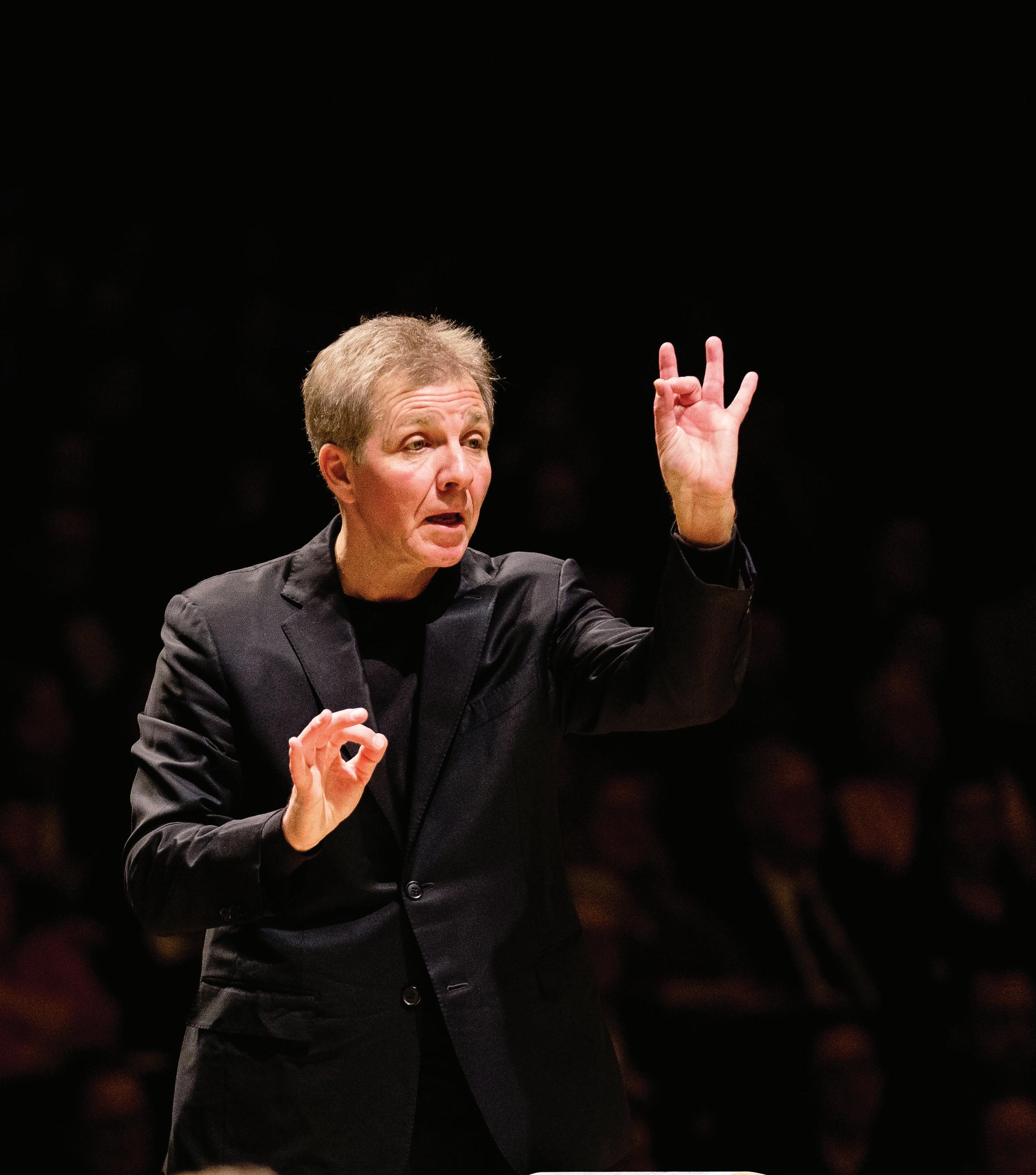
George S. and Dolores
Doré Eccles Foundation
Board of Directors (l to r):
Robert M. Graham , Spencer F. Eccles, Lisa Eccles

MESSIAEN’S TURANGALÎLA SYMPHONY
MAY 19-20 / 7:30PM
JASON HARDINK, PIANO
MAHLER’S SYMPHONY NO. 3
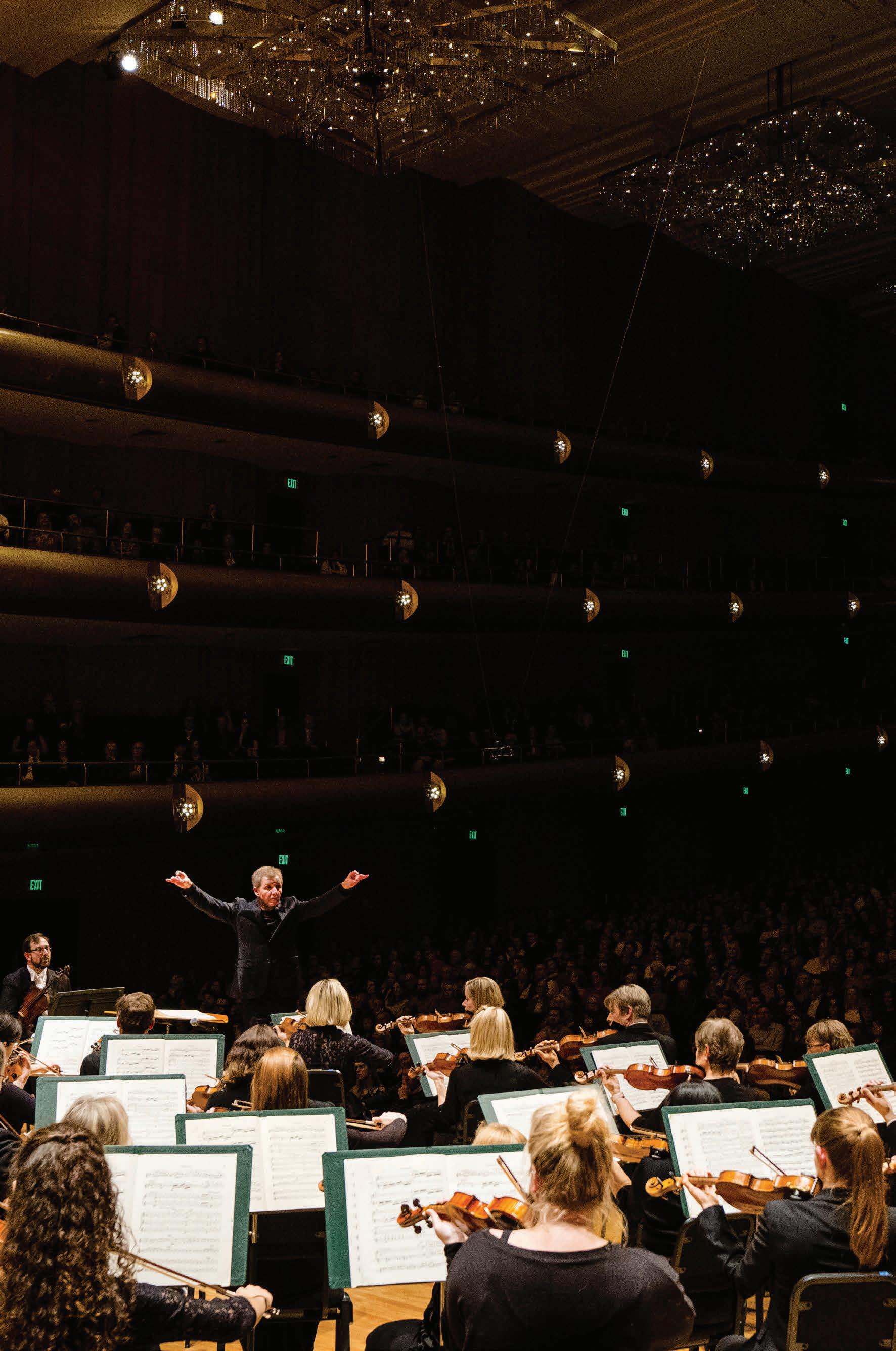
MAY 26-27 / 7:30PM
ANNA LARSSON, MEZZO-SOPRANO SOPRANOS AND ALTOS OF THE TABERNACLE CHOIR AT TEMPLE SQUARE CHORISTERS OF THE MADELEINE CHOIR SCHOOL
APRIL 21, 2023 / 7:30 PM
APRIL 22, 2023 / 5:30 PM
Maurice Abravanel Hall

THIERRY FISCHER, conductor
EMMANUEL PAHUD, flute (Artist-in-Association)
SIBELIUS
ERKKI-SVEN TÜÜR
Finlandia, Op. 26
Lux Stellarum (U.S. Premiere)
I. Fading Stardust
II. Dancing Asteroids
III. Litany of the Dying Stars
IV. Floating Galaxies
Emmanuel Pahud, Flute
INTERMISSION
SIBELIUS
Symphony No. 5 in E-Flat Major, Op. 82
I. Tempo molto moderato - Allegro moderatoPresto
II. Andante mosso, quasi allegretto
III. Allegro molto
CONDUCTOR SPONSOR
CONCERT SPONSOR GUEST ARTIST SPONSOR

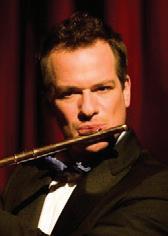
French and Swiss flautist
Emmanuel Pahud began studying music at the age of six. He graduated in 1990 with the Premier Prix from the Paris Conservatoire and went on studying with Aurèle Nicolet. He won 1st Prize at the Duino, Kobe, and Geneva Competitions, and at age 22 Pahud joined the Berliner Philharmoniker as Principal Flute under Claudio Abbado, a position which he still holds today. In addition, he enjoys an extensive international career as soloist and chamber musician.
In 1993, Pahud founded the Summer Music Festival in Salon de Provence together with Eric Le Sage and Paul Meyer, which is still a unique chamber
See page 6 for Thierry Fischer’s profile…

music festival today. He also continues chamber music performances and recordings with Les Vents Français, one of the premiere wind quintets featuring François Leleux, Paul Meyer, Gilbert Audin, and Radovan Vlatković.
He is committed to expanding the flute repertoire and commissions new flute works every year from composers such as Elliott Carter, Marc-André Dalbavie, Thierry Escaich, Toshio Hosokawa, Michael Jarrell, Philippe Manoury, Matthias Pintscher, Christian Rivet, Eric Montalbetti, Luca Francesconi and Erkki-Sven Tüür.
Emmanuel Pahud was honoured to receive the Chevalier dans l’Ordre des Arts et des Lettres for his contribution to music, and is HonRAM of the Royal Academy of Music. He also is an Ambassador for Unicef.
Duration: 8 minutes.
THE COMPOSER – JEAN SIBELIUS
(1865–1957) – Just before the turn of the 20th century, Sibelius was working hard to establish a stable life as a musician. He had failed in 1896 to secure a permanent teaching position at Helsinki University and was regularly spending beyond his means. In 1899, Sibelius wrote and premiered his first symphony, an important event that announced the arrival of a potentially powerful new contributor to the genre, but it didn’t pay the bills. The small lifetime pension he received from the Finnish government that same year helped steady the young Sibelius family a bit, but international fame was still a year away for the composer.
THE HISTORY – Running in the background behind Sibelius’ personal and professional striving in the 1890s was a great deal of discontent for his country. On paper, Finland was an autonomous grand duchy of the Russian Empire. In reality, the Tsar was consistently nibbling away at Finnish self-government with decrees designed to bring the people more fully under Russian dominion. The Finns, Sibelius very much included, reacted with pride and occasional boldness. The composer did his part by celebrating his culture on the concert stage. Works like En Saga, The Swan of Tuonela, and the Karelia Suite put Finland front and center and, in their subtle way, confirmed Sibelius’ commitment to the cause of
self-determination. “I now grasp those purely Finnish tendencies in music… more truthfully than before” he wrote to his wife Aino. But he wanted to contribute more. The chance to do so came with a request to write a new work for a press pension fund event in 1899. Sibelius wrote a fetching anthem for the performance (which had a strong but carefully managed political subtext) called Finland Awakes that put his name on the lips of every Finn. He revised it a year later and changed the title to Finlandia. The piece featured prominently on the Helsinki Philharmonic’s first big tour and Sibelius’ reputation finally began to take hold beyond his homeland borders. The patriotism of Finlandia is pan-national too, and it still stirs the souls of every open-hearted listener, regardless of their country of origin. Reflecting back on the work after Finland achieved its independence from Russia, Sibelius said, “We fought 600 years for our freedom and I am part of the generation which achieved it. Freedom! My Finlandia is the story of this fight. It is the song of our battle, our hymn of victory.”
THE WORLD – Elsewhere in 1899, the Philippine-American War began, the Spanish-American war ended, Aspirin was patented by the Bayer Company in Germany, and Phoebe, a moon of Saturn, was discovered.
THE CONNECTION – Finlandia has not been performed on a Utah Symphony Masterworks concert since 2010. Guest Conductor Mario Venzago was on the podium.
Duration: 25 minutes in four movements.
THE COMPOSER – ERKKI-SVEN TÜÜR
(b. 1959) – Estonian composer Erkki-Sven Tüür got his start in music as the front man of a progressive rock band in the 1970s and made his mark in the Baltic as a classical music composer ten years later. Decades now into his celebrated career, Tüür still tries to raise existential questions with his music. “What is our mission?” he writes, “One of my goals is to reach the creative energy of the listener. Music as an abstract form of art is able to create different visions for each of us, for each and every individual being, as we are all unique.” Tüür has composed nine symphonies, an opera, numerous works for chamber ensemble, and ten instrumental concertos.
THE HISTORY – The most recent of those ten concertos is the Lux Stellarum for flute and orchestra. Written for renowned virtuoso Emmanuel Pahud in 2021, the work was a co-commission of the Berlin Philharmonic and Zurich Tonhalle Orchestra. In Tüür’s own program note for the piece, he admits that the title (“Starlight”, roughly) is, like all of his titles, only intended to “guide the listener’s train of thought onto certain paths.” The concerto is not expressly programmatic, therefore, but rather an opportunity to consider “new unfathomable dimensions” through sound. Where better to encounter such expansive possibility than the cosmos itself? Later in his note, Tüür
recalls a thrilling moonless night he once experienced in Namibia where “the Milky Way glimmered…like a blue cloud” across the sky. “In these moments,” he continues, “the inability of man to actually grasp the scope of the universe, both in time and space, becomes particularly obvious. This emotion, the sense of solemn awe and wonder, and also a sort of eeriness is what Lux Stellarum is about.” The role in the flute in this colorful timbral study of the “unfathomable” is as our proxy, a “lonely spiritual voyager” like us, who is “trying to penetrate the borders of perception.” To appropriately set the stage for that voyage, Tüür used evocative movement titles (Fading Stardust, Dancing Asteroids, Litany of the Dying Stars, Floating Galaxies) to highlight the various celestial processes that are converted in Lux Stellarum into mysterious orchestral vibration. “All great civilizations have interpreted the starlit sky,” Tüür’s commentary concludes, “even our veins are full of ‘stardust’ and the notion that we are part of all this should increase our responsibility to this magnificent planet we are lucky to live on. It should make us humble in the profoundest sense of the word.”
THE WORLD – Elsewhere in 2021, the United States began its full military withdrawal from Afghanistan, Alexei Navalny was jailed in Russia, record floods devastated Belgium and Germany, and the Summer Olympics were held in Tokyo.
THE CONNECTION – These concerts represent the United States Premiere of Erkki-Sven Tüür’s Flute Concerto (Lux Stellarum).
Continued on page 23…













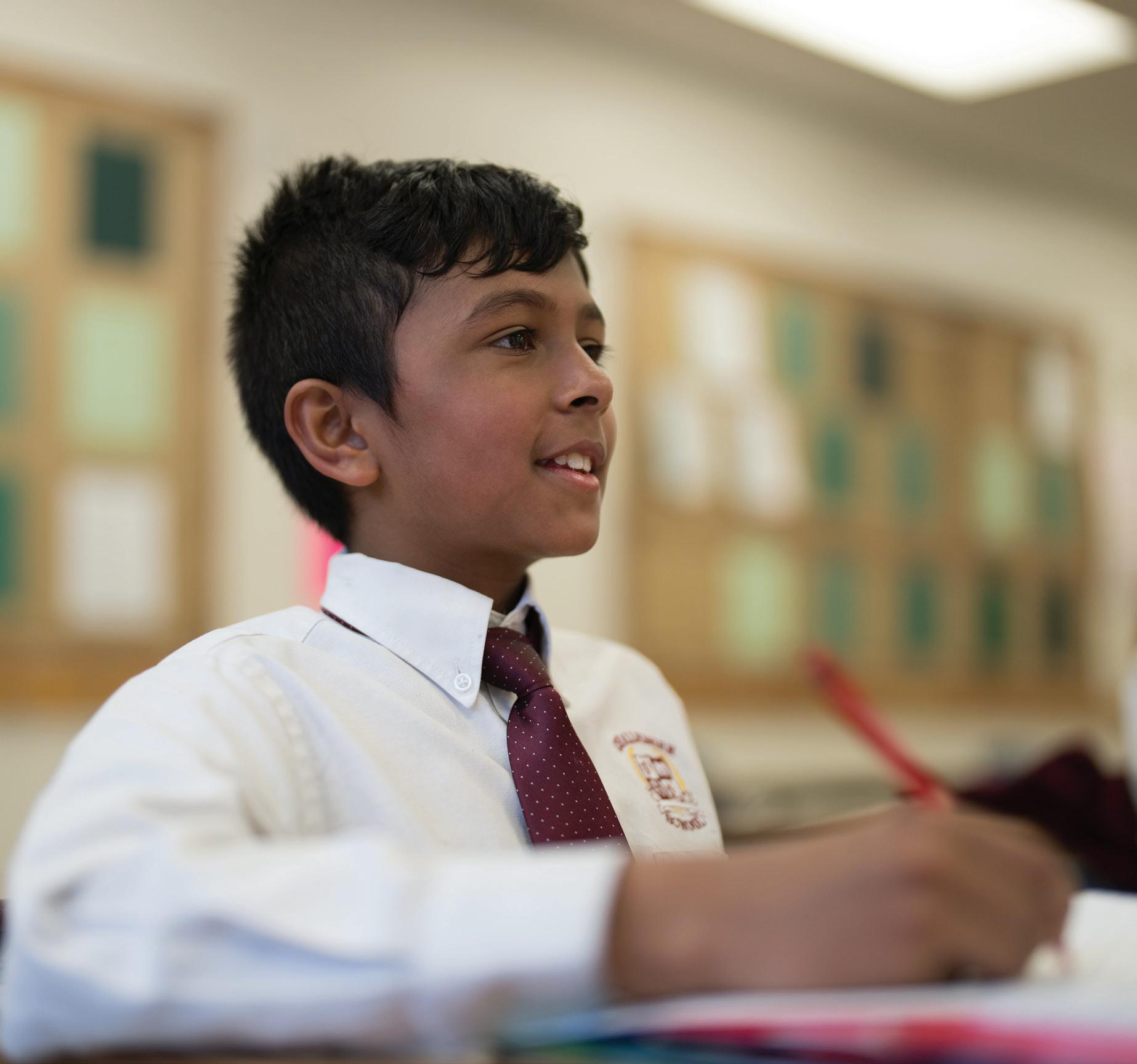
Duration: 30 minutes in three movements.
THE COMPOSER – JEAN SIBELIUS (1865-1957) – Sibelius was confronting a crisis of compositional faith in the middle 1910s. Though he had never intentionally aligned himself with either side of the conservative/progressive debate, the progressives had essentially decided the matter for him and often made him the model-opposite of their preferred “modern” sound. For his part, Sibelius was changing as an artist but not in a way that would register quickly to either side. None of this mattered much by the end of the decade. Europe was a smoldering wreck and Finland fought its own brief civil war after gaining independence from the Russian Empire in 1917.
THE HISTORY – During what would turn out to be the last meaningfully productive period of his career, Sibelius was focused on finding a deeper connection between music and nature. Many of his late creations shared an earthbound spirituality that, according to biographer James Hepokoski, reflected the composer’s secluded forest retreat at Ainola. Predominate among the works that came out of that meditative reverie was the 5th Symphony. It was commissioned for the celebration of Sibelius’ 50th birthday which, given his status as the most importantly “international” Finn artist alive, promised to be a big event. Much like Mozart had done with his 24th Piano Concerto, Sibelius had courted disfavor with his dark and misunderstood 4th Symphony.
But also just like Mozart, the next link in the Sibelius chain provided some welcome triumphal medicine. Symphony No. 5 suffered through three iterations before Sibelius considered it done, the first dating from 1915. 1915 was a Great War year and Sibelius was depressed by the loss of life and financially stricken by the loss of access to his German publishers. His diary entries from the time reveal a decidedly gloomy mood but also make mention of the hopeful “mountain [he would] surely ascend” with the 5th. The symphony was completed in time for the 1915 birthday concert but then almost immediately withdrawn. He revised it in 1916 and then again for a final time in 1919. This is the version we know today. The gorgeous opening sunrise of the first movement has been best described by Sibelius himself: “…God opens His door for a moment and His orchestra plays the 5th Symphony.” This was no boast. Well, it was a boast, of course, but not a harmful one. Just like the absolutely transcendent sounds of the “swan hymn” in the finale, Sibelius was merely acknowledging his fortunate ability to gather the mysterious world around him into music. As an experience, Sibelius 5 is neither modern nor quaint, only lasting.
THE WORLD – Elsewhere in 1919, “The Tragic Week” of anarchist riots erupted in Argentina, as did the Spartacist Uprising in Germany, and the 18th Amendment of the U.S. Constitution (Prohibition of Alcoholic Beverages) was ratified.
THE CONNECTION – Sibelius 5 was last performed on a Utah Symphony Masterworks concert back in 2013. Guest Conductor Yan Pascal Tortelier was on the podium.
Season Sponsor
APRIL 28 & 29, 2023 / 7:30 PM
Maurice Abravanel Hall
KEVIN JOHN EDUSEI, conductor
TAD CALCARA, clarinet
LORI WIKE, bassoon
RAVEL
RACHMANINOFF
La Valse
Isle of the Dead, Op. 29
INTERMISSION
STRAUSS
Duet-Concertino for Clarinet and Bassoon with String Orchestra and Harp
I. Allegro moderato
II. Andante
III. Rondo
STRAUSS
Suite from Der Rosenkavalier, Op. 59
CONCERT SPONSOR
CONDUCTOR SPONSOR
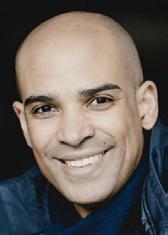
German conductor Kevin John Edusei is sought-after worldwide, dividing his time equally between the concert hall and opera house. He is praised repeatedly for the drama and tension that he brings to his music-making, for his attention to detail, sense of architecture, and the fluidity, warmth, and insight that he brings to his performances. In recent seasons he has conducted many of the major orchestras
across the UK, Germany and the US, and this season will make his debut with the London Philharmonic, Cincinnati Symphony, and National Symphony (Washington) among others, as well as return to the London Symphony, Baltimore and Colorado Symphony orchestras. He is the former Chief Conductor of the Munich Symphony Orchestra and 2022–23 marks the start of his tenure as the Principal Guest Conductor of the Fort Worth Symphony Orchestra. During his time as Chief Conductor of Bern Opera House, he led many new productions.
Tad Calcara has been Principal Clarinet of the Utah Symphony since 1998. Born in Oceanside, California his musical career has encompassed the worlds of classical music and jazz. In addition to his position with the Utah Symphony he has served as Principal Clarinet of the Grand Teton Festival Orchestra, New World Symphony, and was a frequent performer with the Cleveland Orchestra. He is active
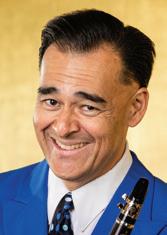
in chamber music having performed at La Jolla Summer Festival, Kol Ami Concert series, and the Nova and Intermezzo Chamber Music Series. As a specialist in early jazz and the Big Band/Swing Era he established the New Deal Swing Orchestra in 2003 which has performed with the Utah Symphony, Salt Lake Jazz Festival, and Excellence in the Community. During the pandemic he created a series of “one-man-band” music videos that were seen by millions in which he plays multiple instruments in his own elaborate arrangements.
Lori Wike joined the Utah Symphony as Principal Bassoon in 2005. Originally from North Carolina, she holds a Bachelor of Music degree and Performer’s Certificate from the Eastman School of Music and a Master of Arts degree from the University of California, Irvine. A former member of the Louisville Orchestra, Wike has also performed with the Rochester Philharmonic Orchestra,
the Moscow Chamber Orchestra, the Saint Paul Chamber Orchestra, and the Aspen Festival and Chamber Orchestras. Prior to joining the Utah Symphony, she performed for three seasons with the New World Symphony under the direction of Michael Tilson Thomas. She is a frequent performer on both the Nova and Intermezzo Chamber Music series and is also a member of Three Fish and a Scorpion woodwind quartet. Wike is currently Adjunct Professor of Bassoon at the University of Utah and Instructor of Bassoon at Westminster College.
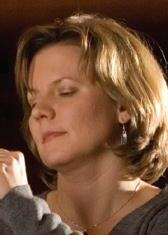

The







Duration: 12 minutes.
THE COMPOSER – MAURICE RAVEL (1875-1937) – When Debussy died in 1918, Ravel found the throne of French concert music unguarded, and the unobstructed path did not suit him. For years, the two men had been set up as rivals in Paris and though neither of them gave the topic any oxygen, it led to a cooling between them. Neither man liked being called an Impressionist (which they were then and still are today) and likely resented how the superficiality of the word masked their individuality as artists. In any case, Ravel had never wanted to be the top man of Parisian musical letters and when that became suddenly inevitable, he demurred and moved away from the city.
THE HISTORY – Ravel reportedly believed that every composer, himself included, secretly wished they could write an excellent waltz, but most were scared off by the difficulty and the wealth of enviable examples already in the repertory. For years, Ravel had entertained the idea of creating an homage work to Johann Strauss, Jr. entitled Wien (Vienna). When Serge Diaghilev approached him after World War I to write a new ballet, he thought he had finally found reason to see it through. Diaghilev’s name is synonymous with so many of the 20th century’s great orchestral scores it is easy to forget the ones he rejected. Ravel gave the impresario a twopiano sneak peek of Wien in the spring of 1920. Poulenc and Stravinsky were in attendance as well and Poulenc recalled the disastrous tension when Diaghilev
referred to the music as “genius” but “not a ballet.” Ravel was highly offended and broke ties with Diaghilev on the spot. So enduring was the animosity between them, it is believed Diaghilev challenged Ravel to a duel a few years later. Thankfully, cooler heads prevailed. La Valse (instead of Wien) premiered as an orchestral work later in 1920 and was finally produced as a ballet in 1928 by none other than Ida Rubenstein (yes, the same competitor of Diaghilev that had commissioned both Boléro and Stravinsky’s The Fairy’s Kiss—which led to the latter’s own permanent split with the Ballets Russes). The grey, brooding mood of La Valse has been popularly attributed to Ravel’s impressions of the Great War and its numberless atrocities, but he remained ever resistant to that interpretation. Certainly, Ravel was unearthing something of a quaint relic with his waltz, in that the war had fully killed the 19th century and all such confectionary comforts. Waltzes were just one among many things of the past, a memory of a time before trenches and gas clouds and mechanized slaughter. It’s all in there, though, just beneath the surface. Whether or not Ravel wants us to think so.
THE WORLD – Elsewhere in 1920, the American Civil Liberties Union was created, legendary explorer Robert Peary died, the Ottoman Empire’s dissolution began, the very first “Ponzi” scheme was attempted, and Joan of Arc was canonized.
THE CONNECTION – La Valse has been programmed frequently by the Utah Symphony. The most recent Masterworks performance was just last season with Maestro Thierry Fischer conducting.
Duration: 19 minutes.
THE COMPOSER – SERGEI
RACHMANINOFF (1873-1943) – From 1890 until his final departure from Russia in 1917, Rachmaninoff spent his summers at a bucolic estate called Ivanovka in the Tambov Oblast (region) 450 kilometers southeast of Moscow. It was the country home of his aristocratic relatives, the Satin family, and the composer wrote many important works (Symphony No. 2 and Piano Concerto No. 3 among them) while in residence there. As political unrest continued to fester in Russia during the first decade of the 20th century, Rachmaninoff found the Ivanovka sojourns more necessary than ever. In fact, after moving to Dresden in 1906 to briefly escape the turmoil, the summer retreats in the Tambov were his only connection to Russia for three years.
THE HISTORY – Rachmaninoff was in Paris in 1907 for a performance of his 2nd Piano Concerto. While there he had occasion to see a black-and-white reproduction of Arnold Böcklin’s painting
Die Toteninsel (The Isle of the Dead). The Swiss symbolist artist had died just six years before and his work, especially The Isle of the Dead, was in vogue throughout Central Europe. Vladimir Nabokov wrote in 1936 that prints of the painting could be “found in every Berlin home” during the first years of the 20th century, and Böcklin had certainly made the most of its popularity and effectiveness by creating no less than six versions between 1880 and 1901. Every version depicts a semi-
circle of imposing rocks as seen from across an expanse of still, dark water. The partial ring of spires surrounds a stand of cypress trees and a low stone water gate. Approaching from just left of center is a small boat with a seated oarsman and a standing, white-robed figure. With them is the simple coffin they must deliver to the tombs. The colors Böcklin used in each version of his “dream image” are muted but significant. We don’t know which iteration Rachmaninoff saw reproduced in Paris, only that it was rendered without the artist’s original palette. The composer was immediately and powerfully moved by what he saw, with the music for his own Isle of the Dead coming in an unbidden rush. “It came up within in me,” he said, “was entertained, written down.” Not right away, it turned out, but soon enough. He began work on it during one of his Ivanovka visits and completed the score in Dresden in 1909. Interestingly, Rachmaninoff was able to view the fifth version of Die Toteninsel later in Leipzig and admitted that the color threw him off. “I like it in black and white,” he said, adding that if he had seen it as Böcklin intended back in 1907, he probably would not have felt so compelled to write his highly dramatic tribute piece.
THE WORLD – Elsewhere in 1909, the city of Tel Aviv was founded, Joan of Arc was beatified by Rome, Ernest Shackleton claimed the South Magnetic Pole, and British Petroleum had its beginnings as the Anglo-Persian Oil Company.
THE CONNECTION – Rachmaninoff’s Isle of the Dead has not been programmed on a Utah Symphony Masterworks concert since 2008. Keith Lockhart was on the podium.
Duration: 19 minutes in three movements.
THE COMPOSER – RICHARD STRAUSS
(1864-1949) – Blessed with long life and endless intellectual stamina, Richard Strauss was prolific in the genres of opera, lieder, and the orchestral tone poem. His contributions in those areas are legendary and peerless. He was, however, surprisingly silent in the standardized compositional categories that inspire comparisons across borders and time. He wrote only two symphonies, one string quartet, and very few concertos. In the latter group are the two horn concertos, an oboe concerto, the Burleske for piano and orchestra, and a rarely heard violin concerto he completed as a teenager. That would have been it for orchestral soloists, if not for a very special commission Strauss received near the end of his life.
THE HISTORY – The piece written in fulfilment of that commission would be the last purely instrumental music of Strauss’ career, with only the Four Last Songs still left to be said. In 1947, about the time he began to conceive of the Duet-Concertino for Clarinet and Bassoon, Strauss was asked by a London journalist about what was next for him. “Well, to die, of course!” said the composer, and he wasn’t far off the mark. Within two years it would be so, but there was work to do in the meantime. The commission came from the Orchestra of Italian Switzerland in Lugano and their conductor Otmar Nussio, but Strauss had a specific friend in mind when he put pen to paper. Hugo Burghauser was Principal Bassoon of the Vienna Philharmonic and
one of Strauss’ oldest mates. Burghauser heard about the piece in a letter from the composer. “I am occupied with the idea for a double concerto for clarinet and bassoon,” Strauss wrote, “and I am thinking of your marvelous sound. Perhaps it will interest you.” Perhaps indeed. Bassoonists, even the ones with famous friends like Richard Strauss, don’t get this kind of letter every day. There were early indications that Strauss intended to follow a programmatic design for the Duet-Concertino based on a Hans Christian Andersen tale. In the story of The Swineherd, a prince (the bassoon) pretends to be the pig handler in the palace of the princess (the clarinet) in order to get close to her. Strangely, Strauss told Burghauser a completely different story about a princess (still the clarinet) who is startled by a bear (the bassoon) which later transforms into a prince after they dance. In the end, it seems that neither scenario was followed to the letter, so the duo-concerto should probably be enjoyed as a purely musical experience. It works perfectly well without the pigs and bears and is a lovely example of the lean, retrospective voice Strauss often used in his final years.
THE WORLD – Elsewhere in 1948, Mahatma Gandhi was assassinated, Israel was established as an independent nation, the World Health Organization was founded, and the first Polaroid cameras went on sale in Boston.
THE CONNECTION – The Utah Symphony has performed the music of Strauss quite frequently during its long history, but this is the first time it has presented the Duet-Concertino.
Duration: 22 minutes in six movements.
COMPOSER
(1864-1949) – By 1909, Strauss had securely established himself as a bona fide modernist thanks to the deadly operatic sisters Salome and Elektra. Salome had already shocked the world in 1906 with its scandalous disruption of the operatic status quo (it was immediately banned in Austrian and English houses) when Elektra followed as confirmation that something subversive and special was afoot in the German-language stage music. Celebrated Austrian author Hugo von Hofmannsthal had adapted the German dramatic version of Elektra in 1903 and the operatic treatment he worked on with Strauss in 1909 was the beginning of an important friendship. But, after so much blood and fire, where would Strauss go next?
THE HISTORY – There would be no third sister. Strauss had apparently walked a bit too far down the avant garde path for his own comfort. After the lurid darkness of his back-to-back contemporary masterpieces, the composer was ready to look to music history’s past, not its future, for inspiration. For their second collaboration, Strauss asked Hofmannsthal to consider the more civilized possibilities of an 18th century comedy à la Mozart. Salome and Elektra had essentially been plays set to music, but for his next opera Strauss was determined to co-create a libretto from scratch. The highly literary and successful Der Rosenkavalier (1911) was the result. In terms of structure and style, Rosenkavalier
was different from the previous two operas in almost every possible way. It was cast in the customary three acts and employed a much more conventional musical language that even included waltzes, an out-offashion reminder of simpler times. It was all designed to fit the plot, which was in fact a wonderful echo of the traditional Mozartean farce set in the golden age of Viennese high society, filled to its limits with courtly intrigue, amorous entanglements, and cross-dressing hijinks. It arguably remains the most popular of Strauss’ operas and is certainly the best loved of the Hofmannsthal partnerships. Strauss was initially reluctant to excerpt a suite from the score, even though parts of it (the waltzes in particular) seemed perfect for concert performance. After first working with Hofmannsthal on an ultimately unsuccessful film version in 1925 and later creating his own waltz sequences, Strauss finally consented to a suite of key moments from the opera in 1945. The six movements make no attempt to trace linear highlights of the story as Strauss’ selected scenes were not assembled with regard for narrative legibility, but they hold together quite nicely as a compact and musically sensible concert experience.
THE WORLD – Elsewhere in 1911, George V was crowned King of England, the Mona Lisa was stolen by a Louvre employee, Machu Picchu was rediscovered by Hiram Bingham, and Norwegian explorer Roald Amundsen reached the South Pole.
THE CONNECTION – The Rosenkavalier Suite has been programmed rarely on the Utah Symphony Masterworks Series, but it was performed as recently as 2019 under Xian Zhang.
DEER VALLEY MUSIC FESTIVAL JUNE 30–AUGUST 4 IN PARK CITY


MAY 19 & 20, 2023 / 7:30 PM
Maurice Abravanel Hall
THIERRY FISCHER, conductor
JASON HARDINK, piano
AUGUSTIN VIARD, ondes Martenot
MESSIAEN Turangalîla-Symphonie for Piano, Ondes
Martenot, and Orchestra
I. Introduction
Modéré, un peu vif
II. Chant d’amour 1
Modéré, lourd
III. Turangalîla 1
Presque lent, rêveur
IV. Chant d’amour 2
Bien Modéré
V. Joie du sange des étoiles
Un peu vif, joyeux et passionné
VI. Jardin du sommeil d’amour
Très modéré, très tendre
VII. Turangalîla 2

Piano solo un peu vif: orchestre modéré
VIII. Développement de l’amour
Bien modéré
IX. Turangalîla 3
Modéré
X. Final
Modéré, avec une grande joie
Jason Hardink, piano
Augustin Viard, ondes Martenot



fufillment or tragedy? in the opening measures.
hopeful or foreboding?
Symphony No. 6 Track 03



“Mountain Meadows”

A fearless interpreter of large-scale piano works both modern and historical, pianist Jason Hardink’s recent debut at Weill Recital Hall was lauded for its audacious programming and pianism demonstrating “abandon and remarkable clarity” and a “capacity for tenderness and grace” (Anthony Tommasini, The New York Times).
Concerts during the 2022–23 season include Michael Hersch’s The Vanishing Pavilions as Part I of the US premiere of his cycle, sew me into a shroud of leaves (National Sawdust, May 2023) and recitals with Utah Symphony
See page 6 for Thierry Fischer’s profile…
Concertmaster Madeline Adkins (January/ February, 2023).
As Artistic Director of the NOVA Chamber Music Series for nine seasons, Hardink’s programming vision regularly juxtaposed the standard works of the canon with music by living composers. While NOVA devoted a great deal of space to recent and commissioned works by Utah composers, the series also featured several multi-season cycles of music by important American composers.
Jason Hardink resides in Salt Lake City, Utah, where he holds the position of Principal Keyboard with the Utah Symphony. He is married to pianist Kimi Kawashima, and they are parents of twin boys, Luc and Derek.


ondes Martenot
Born in Provence, France, Augustin Viard started his musical learning journey through eclectic contemporary styles such as rock music and blues. In 2004, he joined the ondes Martenot class at the Conservatoire de Boulogne-Billancourt, headed by Pascale Rousse-Lacordaire. Five years later, he was admitted to the Conservatoire National Supérieur de Musique de Paris, studying in the ondes Martenot class of Valérie HartmannClaverie, and performing Messiaen’s Turangalîla-Symphonie. He graduated in 2013 with a masters degree.
His eagerness to explore new creative horizons allowed him to be involved in numerous contemporary premieres, to collaborate with several chamber music groups (Hendricks’ Quartet, Ensemble
Vecteurs ondes, Ensemble Volta, Ensemble Traces d’Aujourd’hui) and to execute improvised music.
Augustin Viard plays Evgeni and Sacha Galverine’s film score for string quartet, piano and ondes Martenot on Andreï Zviaguintsev’s Oscar nominated film Loveless which received the Prix du Jury du Festival de Cannes 2017 and the César du meilleur film étranger (best foreign film) 2018. In 2021 he composed the original theme for Earwig a full-length film directed by Lucile Hadzihalilovic, which won the Special Jury Prize at the San Sebastian International Film Festival and was nominated at the 2021 BFI London Film Festival. In January 2022 he performed the score live for a cinema screening at the Arvor Cinema in Rennes, France.
He is Professor of ondes Martenot at the Conservatoire de Boulogne Billancourt.
Duration: 76 minutes in ten movements.
THE COMPOSER – OLIVIER MESSIAEN (1908–1992) – For Messiaen, the 1940s began with war in Europe and ended with a concert in the United States. He was captured by the Germans in 1940 and imprisoned at Stalag VIII-A in Görlitz. The year he spent there contained both hunger and inspiration, as the Quartet for the End of Time, perhaps still Messiaen’s most-performed work, was born inside those fences. Almost immediately upon his release in 1941, Messiaen was appointed to the Paris Conservatory faculty and continued his steady march towards the astonishing compositional individuality that would mark his career and legacy. His developing musical philosophy, discernable through manipulations of duration, dynamics and rhythm, was reflected in the new “symphony” that premiered in America during the last days of 1949.
THE HISTORY – “Symphony” appears in quotes above because, in the context of Turangalîla, the application is decidedly non-traditional. Written from 1946–1948, the TurangalîlaSymphonie was commissioned by Serge Koussevitzky for his Boston Symphony (Bernstein conducted the premiere when Koussevitzky fell ill). It has a 10-movement plan that, with enough observational generosity, could be forced to trace the standard tripartite arc of a symphony, but Turangalîla is too large and too ambitious to be bound by that, or any other formal contrivance. In fact, Messiaen required a huge orchestra
to bring his unwieldy vision for the Turangalîla-Symphonie to life, including prominent parts for solo piano and ondes Martenot (an electronic keyboard instrument that produces a sound like a theremin). Fixed between Harawi: Chants d’amour et de la mort (1945) and Cinq rechants (1948), Turangalîla helped form a trilogy of works based on Messiaen’s fascination with the Tristan and Isolde story. Turangalîla then is an epic exploration of love in all its many guises—emotional, physical, even metaphysical. The title of the piece comes from two Sanskrit words that translate roughly to “time” (as viewed in motion through the speed of a galloping horse) and “play” (as in the “game” of creation, life and death). Those concepts, when paired with the central feature of the Tristan mythology, give us what Messiaen himself called “a love song; a hymn to joy” that is “superhuman, overflowing, blinding, unlimited”. Truly, those last four words do more to describe Turangalîla than even the most thorough investigations of its ingredients. Messiaen knew the structural ingenuity and kaleidoscopic orchestral coloration of the score would resist intellectual interpretation and, like love, would need to be experienced to be believed.
THE WORLD – Elsewhere in 1948, the modern state of Israel was declared, Mahatma Gandhi was assassinated and the famously wrong headline “Dewey beats Truman” appeared in the Chicago Daily Tribune.
THE CONNECTION – This week’s concerts represent the Utah Symphony premiere of Messiaen’s Turangalîla-Symphonie.



















MAY 26 & 27, 2023 / 7:30 PM
Maurice Abravanel Hall
Thierry Fischer, conductor
Anna Larsson, mezzo-soprano
Sopranos & Altos of The Tabernacle Choir at Temple Square
Mack Wilberg, chorus director (The Tabernacle Choir)
Choristers of The Madeleine Choir School
Melanie Malinka, chorus director (The Madeleine Choir School)
MAHLER Symphony No. 3 in D minor (1906 revision)
I. Kräftig; Entschieden
II. Tempo di menuetto; Sehr mässig
III. Comodo; scherzando; ohne Hast
IV. Sehr langsam; misterioso
V. Lustig im Tempo und keck im Ausdruck
VI. Sehr langsam; ruhevoll; empfunden
Anna Larsson, mezzo-soprano
Sopranos & Altos of The Tabernacle Choir at Temple Square
The Madeleine Choir School
CONCERT SPONSOR

CONDUCTOR SPONSOR
ORCHESTRA SPONSOR
Anna Larsson graduated from the University College of Opera in Stockholm in 1996. Her international debut followed immediately in Mahler Symphony No. 2 with the Berliner Philharmonic Orchestra and Claudio Abbado, and her opera debut as Erda in Wagner’s Das Rheingold at the Deutsche Staatsoper Berlin conducted by Daniel Barenboim. Among her many roles are Kundry in Wagner’s Parsifal, Herodias

For more than a century, The Tabernacle Choir has given voice to the hopes, joys, trials, and triumphs of people around the world.
This 360-member chorus of men and women, all volunteers, has performed at World’s Fairs and expositions, at inaugurations of U.S. presidents, in acclaimed concert halls from Australia
See page 6 for Thierry Fischer’s profile…
in Massenet’s Hérodiade, Erda in Wagner’s Siegfried and Fricka in Die Walküre, Delilah in Saint-Saëns’ Samson and Delilah and Genevieve in Debussy’s Pelleas et Mélisande at theatres including Teatro alla Scala, Vienna State Opera, Bayerische Staatsoper, Salzburg and Aix-en-Provence Festivals, the Opéra de Paris, the Royal Opera House in London, Teatro Maggio Musicale in Florence, La Monnaie Brussels, Palau des Arts
Valencia, Royal Opera Copenhagen, Finnish National Opera and the Swedish Royal Opera.
and Europe to Asia and the Middle East, on television broadcasts, and now on YouTube and Facebook. The choir has even been referred to as “America’s Choir,” as a result of their high standard of popular choral music.
Known from its beginnings as the Mormon Tabernacle Choir, the Choir changed its name in October 2018 to more closely align with its sponsoring organization, The Church of Jesus Christ of Latter-day Saints. The Choir is now called “The Tabernacle Choir at Temple Square.”

Mack Wilberg was appointed music director of The Tabernacle Choir at Temple Square on March 28, 2008, having served as associate music director of the Choir since May 1999. Dr. Wilberg is responsible for all musical and creative aspects of the Choir and Orchestra at Temple Square in rehearsals, concerts,
tours, and recordings, as well as the weekly broadcast of Music & the Spoken Word. He is a former professor of music at Brigham Young University and is active as a composer, arranger, guest conductor, and clinician throughout the United States and abroad. Dr. Wilberg received his bachelor’s degree from Brigham Young University and his master’s and doctoral degrees from the University of Southern California. He and his wife, Rebecca, are the parents of four children and have one granddaughter.
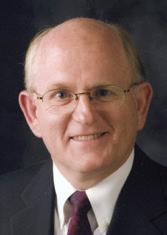
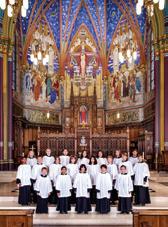
Located in downtown Salt Lake City, The Madeleine Choir School is far more than a music school. MCS offers students strong character formation and a holistic approach to exceptional age appropriate learning. MCS music curriculum is unmatched and also provides outstanding instruction in the

humanities, mathematics and the sciences, as well as foreign languages, visual arts, theology, and athletics. The choristers in Grades Five through Eight regularly assist with the worship life at the Cathedral of the Madeleine and participate in the Annual Concert Series. The Choristers of the Madeleine Choir School regularly collaborate with the Utah Symphony and Utah Opera and other arts organizations, including the Grand Teton Music Festival.
Melanie Malinka is a native of Stuttgart, Germany and has served as Director of Music at The Madeleine Choir School in Salt Lake City, UT since 2001. She regularly conducts the Cathedral Choir of The Cathedral of the Madeleine and has served as interim chorus master for several opera productions of the Utah Opera. She also

regularly serves as guest conductor and clinician at choral festivals and workshops around the country. In addition, she also maintains a private voice studio focusing on boy sopranos and young adolescent voices. Melanie received a Bachelor of Music in Voice Performance from Westminster Choir College of Rider University in Princeton, New Jersey and a Master of Music in Choral Conducting from the University of Utah where she studied with Dr. Barlow Bradford.
Continued on page 46…
MELANIE MALINKA Chorus Director (The Madeleine Choir School)




GRAPHIC DESIGN BFA EXHIBITION
Apr 20–21
EMERALD SINGERS
Apr 21
BASS CLEF FEST
Apr 22
UVU & WOLVERINE: STEELBANDS
FEAT. TYLER SWICK
APR 25
FINE ART PHOTO EXHIBITION

Apr 25–May 5
ILLUSTRATION BFA EXHIBITION
Apr 25–May 5
SYMPHONY ORCHESTRA
Apr 26
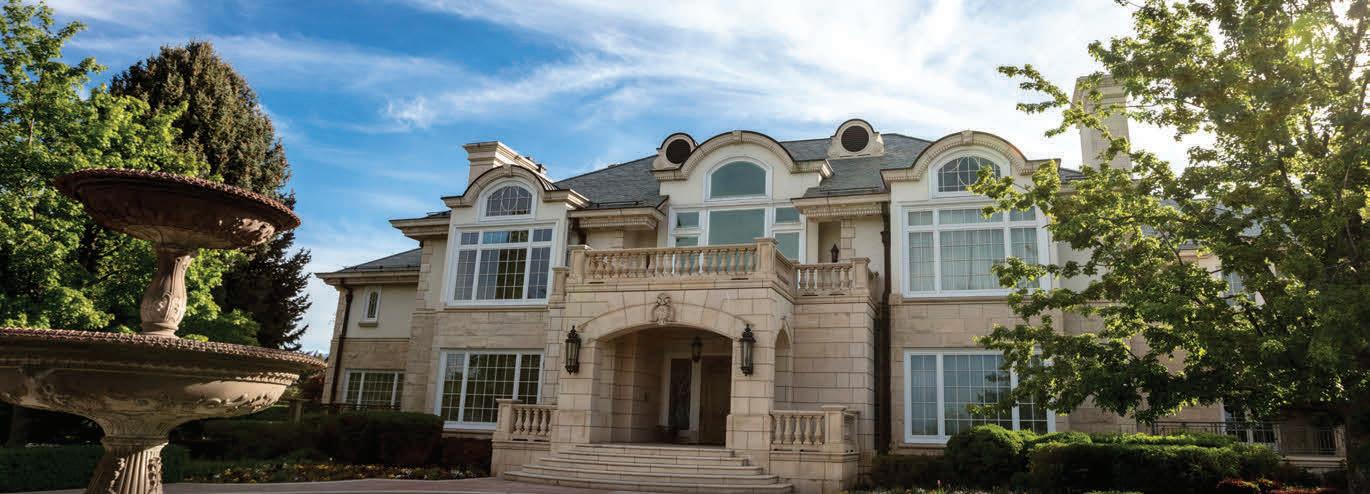
BALLROOM DANCE COMPANY: GLITZ & GLAM
Apr 28–29 OPENING MAY 2023! FOR MORE INFORMATION, VISIT www.uvu.edu/museum/
Duration: 92 minutes in six movements.
THE COMPOSER – GUSTAV MAHLER (1860-1911) – Already well established as a busy and highly-regarded opera conductor, Mahler’s first real success as a composer came in December 1895. The reception of his Symphony No. 2 proved that his maximalist vision for the future of orchestral music could work and gave him the confidence to pursue his other dream—a conducting position in Vienna at the Hofoper. Mahler’s letters from the time reveal no small measure of concern that his candidacy could be undermined by either his “craziness” or his Jewishness. To forestall the latter, which the prevailing Austrian social climate would surely have confirmed, he converted to Catholicism in 1897.
that begins firmly on Earth but manages to slip its bonds by the end. The scenario underwent many revisions, but essentially described the symphony’s six movements as: 1. Pan awakes – Summer marches in; 2. What the flowers in the meadow tell me;
3. What the animals in the forest tell me;
THE HISTORY – If Symphony No. 2 was Mahler’s grand thesis on formal and emotional scale, Symphony No. 3 would take every element of it at least one step further. Program annotators and biographers frequently hold up No. 3 as the most complete fruition of Mahler’s two famous comments about how a symphony must contain an entire world (even though the second, more liberally quoted of these statements came over a decade later while he was writing No. 8). Indeed, his ambitions in 1895 were planetary in scope. No. 3, written mostly in 1895 and completed in 1896, is the longest of Mahler’s nine completed symphonies, with an epic first movement that would dwarf whole works by other composers. From the start, he had a programmatic conception in mind
4. What humanity tells me; 5. What the angels tell me; 6. What love tells me. No version of this plan was published at the premiere, however, indicating perhaps that these thoughts were meant only for friends and colleagues. Mahler, who was often reluctant to share his inspirations publicly, felt audiences would enjoy the experience better without a roadmap. Another meaningful omission was the intended finale based on “The Heavenly Life” from the Des Knaben Wunderhorn collection. That beautiful song would end up anchoring Symphony No. 4 but No. 3 does not suffer much for the loss. The closing Adagio focuses instead on simple love, not heaven (likely a complex and elusive concept at that time in Mahler’s religious life). It responds to the rigid time of the first movement with an untethered adoration of all that has come before and, with that, succeeds in fulfilling the promise of the Symphony’s staggering architecture. A world born. A world complete.
THE WORLD – Elsewhere in 1896, the first modern Olympic games were held in Athens, Utah became a state, Oscar Wilde’s Salome premiered in Paris and Italian inventor Guglielmo Marconi sought a patent for his wireless telegraph system.
THE CONNECTION – Mahler 3 has not been performed on a Utah Symphony Masterworks program since 2015 with Thierry Fischer himself.








We thank our generous volunteers for their annual support of Utah Symphony | Utah Opera. This list includes volunteers that have given their time from August 20, 2021 to June 20, 2022. For more information or to sign up, email volunteers@usuo.org.
75 hours or more
Scot Barraclough
Jean Barton
Chip Browne
Yolanda Bunderson
Doyle Clayburn
Andrea Erekson
Arlen Hale
Lincoln Holingshead
Amber Johnson
Karen Jurgens
David Lach
Liz LeFevre
Sandra Marsh
Andrea Measom
Luke Pettit
Anne Polinsky
Gunter Radinger
Carol Radinger
Rick Seven
David Webster
Whit Wirsing
Ken Wilson
SFORZANDO |
50-75 hours
Gary Allen
Jan Baker
Robert Curtis
Strike Fongeallaz
Patrice Gallagher
Alexandra Hurst
Alison Knudson
Jason Lee
Marilyn Paulson
Steffan Perez
Rebecca Roche
Ethan Schapiro
Skye Sieber
Caleb Unwin
FANFARE |
25-50 hours
Doug Allen
Cameron Arave
Anthony Arnason
Maureen Bradley
Andrea Butler
Danielle Castillo
Chris Chan
Jenny Evans
Holly Farnsworth
Olivia Fernelius
Joe Fire
Sylvia Goff
Oscar Gonzales-Mejia
Mackenzie Grover
Jessica Hacking
Lillian Hatch
LeAnn Hedquist
Kathy Holmes
Dale Johnson
Denise Konrad
Martin Kruger
Nancy Laursen
Lindsey Marx
Christy Neel
Ribhu Nirek
Nancy Pitstick
Jeanette M. Ricci
Jill Rindlisbacher
Ricky Rindlisbacher
Mary Ellen Rosen
Beatrix Sieger
Donna Smith
Ron Smith
Pam Snyder
Laural Spenser
Emily Terrell
Phillip Terrell
Daniela Trevino
Nicholas Unsworth
Sally Wakefield
Lisa Williams
Cynthia Witt
Red York
Less than 25 hours
Reva Anderson
Cynthia Bampi
Andrea Barton
Sibyl Bogardus
Thea Brannon
Rachel Brooks
Rhianna Brunson
Kathy Call
Grant Chang
Maggie Cortsen
Leslie Davis
Shanel Day
Kay Erekson
Dan Erekson
George Erekson
Lauren Erekson
Chad Erekson
Audrey Evans
Cade Gates
Vicki Gilchrist
Janalee Goebel
Mathew Goebel
Oliver Goebel
Rosie Graff
Luana Griffin
Sydney Hawkins
Barbara Anne Hawkins
Charles Hodge
Kathleen Lamborn
Michael Lamborn
Blanca Leodegario
Pam Miller
Alice Miller
Lisa Morris
George Muller
Mary Grace Murray
Lindsay Nebeker
Robin Nelson
Sophia Nielsen
Shirley Noon
Kate Omao
Lucy Ordaz
Sasha Poma
Kathy Pope
Ashley Rackham
Paola Rampton
Elizabeth Ryder
Adam Schechter
Lisa Silbaugh
Viki Snow
Annette Solt
Chris Terrell
Jeanie Ulicny
Roseann Woodward
Utah Symphony | Utah Opera is grateful to our generous donors who, through annual cash gifts and multi-year commitments, help us bring great live music to our community.
Gifts as of March 7, 2023
* in-kind donation ** in-kind & cash donations † deceased
MILLENNIUM ($250,000+)
Anonymous Kem & Carolyn Gardner
ENCORE ($100,000 TO $249,999)
Anthony & Renee Marlon
Lawrence T. & Janet
T. Dee Foundation
John & Marcia Price Family Foundation
Shiebler Family Foundation
BRAVO ($50,000 TO $99,999)
Judy Brady† & Drew
W. Browning
Larry Clemmensen
John & Flora D’Arcy
Brian & Detgen Greeff
Edward Moreton
Estate of Linda & Donald Price
Mark & Dianne Prothro
Patricia A. Richards & William K. Nichols
Harris H. & Amanda Simmons
OVERTURE ($25,000 TO $49,999)
Fran Akita
Doyle Arnold & Anne Glarner
Thomas Billings & Judge
Judith Billings
Bloomfield Family Foundation
John H.† & Joan B. Firmage
John H. & Carol Firmage
Kristen Fletcher & Dan McPhun
David & Angela Glenn
Intuitive Funding
Tom & Lorie Jacobson
Thomas M. & Jamie Love
Mr. & Mrs. Charles McEvoy
Fred & Lucy Moreton
James & Ann Neal
Peggy & Ben Schapiro
Elizabeth Solomon
George Speciale
Naoma Tate & the Family of Hal Tate
Jim & Zibby Tozer
Jacquelyn Wentz
Wheatley Family Charitable Fund
Theodore & Elizabeth Schmidt Foundation
Dewelynn & J. Ryan† Selberg
Sam† & Diane Stewart
Steve & Betty Suellentrop
Taft & Anne Symonds
John & Jean Yablonski
Edward & Marelynn† Zipser
Anonymous
Austin & Kristi Bankhead
Dr. J.R. Baringer & Dr.
Jeannette J. Townsend
Dr. & Mrs. Clisto Beaty
Diane & Hal Brierley
Judy & Larry Brownstein
Shelly Coburn
Dr. Kent C. DiFiore & Dr. Martha R. Humphrey
Kathleen Digre & Michael Varner
Pat & Sherry Duncan
Dr. & Mrs. Ralph Earle
Barry & Traci Eden
Sarah Ehrlich
Matthew B. Ellis Foundation
Carolyn & Craig Enenstein
Midge & Tom Farkas
Thomas & Lynn Fey
Robert & Elisha Finney
Brandon & Kristen Fugal
Susan & Tom Hodgson
Mary P.† & Jerald H. Jacobs Family
Annette & Joseph Jarvis
G. Frank & Pamela Joklik
Jeanne Kimball
Mr. & Mrs. Christopher
J. Lansing
Bill Ligety & Cyndi Sharp
Tom & Janet McDougal
Jed Millburn
Millerberg Family Foundation
Harold W. & Lois Milner
Terrell & Leah Nagata
Metta Nelson Driscoll
Leslie Peterson & Kevin Higgins
Frank R. Pignanelli & D’Arcy Dixon Pignanelli
Walter J. & Peggy Plumb
Stephen & Cydney Quinn
David & Shari Quinney
Albert J. Roberts IV
John F. Foley, M.D. & Dorene Sambado, M.D.
Mr. & Mrs. G. B. Stringfellow
Chris Akita Sulser
Thomas & Marilyn Sutton
The Christian V. & Lisa D. Young Family Foundation
Kathie Zumbro

4Girls Foundation
Anonymous [10]
Alan, Carol, & Annie Agle
Douglas Anderson
Margaret & Grant Bagley
Kyle & Melissa Barnett
H. Brent & Bonnie Jean
Beesley
David Brown
Hannalorre Chahine
William & Patricia Child
John Clukey
Marc & Kathryn Cohen
LJJ Fund at the Community Foundation of Utah
Mr. & Mrs. Kenneth R. Cutler
Anne Daigle & Rich Heyman
Marian Davis & David Parker
Matthew B. Ellis Foundation
Jack & Marianne Ferraro
Rulon Gardner
Sarah Garrison
Diana George
Elaine Gordon
Barbara Greenlee
David & SandyLee Griswold**
Ray & Howard Grossman
Emma Hamilton & Brian
Casper
Diane & Michael Hardink
Chuck & Kathie Horman
Sunny & Wes Howell
Ronald & Janet Jibson
Jill Johnson
Allison Kitching
Howard & Merele Kosowsky
Michael & Peg Kramer
Gary & Suzanne Larsen
Daniel & Deena Lofgren
Dennis & Pat Lombardi
Heidi & Edward D. Makowski
Robert Marling
Christopher & Julie McBeth
Michal & Maureen Mekjian
W. C. Moeller & Joanne Moeller
Patricia Legant & Thomas
Parks
Dr. Dinesh & Kalpana Patel
Mr. & Mrs. James S. Pignatelli
Quinn Family Charitable Foundation
Brooks & Lenna Quinn
Joyce Rice
Kenneth Roach & Cindy Powell
Richard & Carmen Rogers
James & Anna Romano
Sandefur Schmidt
Barbara & Paul Schwartz
Brent & Lisa Shafer
Scott & Karen Smith
Sidney Stern Memorial Trust
Shane & Stacey Stowell
Craig Stuart
David O. Tanner
Paul Taylor
Tim & Judy Terrell
Brad E. & Linda P. Walton
Jaelee Watanabe
Dan & Amy Wilcox
Douglas Wood
ABRAVANEL & PETERSON SOCIETY ($2,500 TO $4,999)
Anonymous [2]
Craig & Joanna Adamson
Dr. & Mrs. Jeffrey L.
Anderson
Pam & Paul Apel
Drs. Crystal & Dustin Armstrong
Dr. Ann Berghout & Dennis
Austin
Tina & John Barry
Charles & Jennifer Beckham
Lowell Bennion
Dr. Melissa Bentley
Céline Browning
Michael & Vickie Callen
Mr. & Mrs. William D. Callister
Vincent Cannella
Dr.† & Mrs. Anthony Carter
Mark & Marcy Casp
Po & Beatrice Chang & Family
Blair Childs & Erin Shaffer
Doug Clark
Howard & Betty Clark
George & Katie Coleman
Debbi & Gary Cook
Dr. Thomas D. & Joanne A.
Coppin
Cindy Corbin
Ruth Davidson
Thomas D. Dee III & Dr.
Candace Dee
Michael & Sheila Deputy
Margarita Donnelly
John D Doppelheuer M.D. & Kirsten A. Hanson M.D.
Karey Dye
Carol & Greg Easton
Hans & Nanci Fastre
James Finch
Adele & James Forman
Linda Francis
Thomas Fuller
Joseph F. Furlong III
Robert & Annie-Lewis Garda
Dave Garside
Larry Gerlach
Jeffrey L. Giese, M.D. & Mary E. Giese
Bob & Mary Gilchrist
Shari Gottlieb
Susan Graves
Dr. & Mrs. John Greenlee
Ronald & Kaye Gunnell
Kenneth & Kate Handley
Jonathan Hart

























































Jeff & Peggy Hatch
Nancy Ann Heaps
John Edward Henderson
Don Hendricks
Marian & Matt Hicks
Richard & Ruth Ann Hills
Robert & Dixie Huefner
Michael Huerta & Ann
Sowder
Jay & Julie Jacobson
Drs. Randy & Elizabeth Jensen
M. Craig & Rebecca Johns
Maxine & Bruce Johnson
James R. Jones & Family
Neone F. Jones Family
Dr. Michael A. Kalm
Dr. James & Carolyn
Katsikas
Michael & Amy Kennedy
Les Kratter
Jeffrey LaMora
Dr. Donald & Alice Lappe
Tim & Angela Laros
Harrison & Elaine Levy
Michael Liess
Abbot B & Joan M Lipsky
Fund
John & Kristine Maclay
Abigail Magrane
Shasha & Brian Mann
Peter Margulies & Louise
Vickerman
Kathryn & Jed Marti
Dale & Carol Matuska
David & Nickie McDowell
Ted A. McKay
Karen & Mike McMenomy
George & Nancy Melling
David B. & Colleen A. Merrill
John & Bria Mertens
Carol & Anthony W.
Middleton, Jr., M.D.
Cyrus & Roseann Mirsaidi
MJZR Charitable Trust
Dr. Louis A. Moench & Deborah Moench
Ashton Newhall
Vincent & Elizabeth Novack
Patrick O’Connell
Stanley B. & Joyce M.
Parrish
Elodie Payne
Ray Pickup
Lisa Poppleton & Jim
Stringfellow
W.E. & Harriet R. Rasmussen
Glenn Ricart
Gina Rieke
Mr. & Mrs. Robert Rollo
Rebecca Roof & Gary Smith
Royall Family Charitable Fund
Nathan Royall
Mark & Loulu Saltzman
Margaret P. Sargent
Nathan & Shannon Savage
Diana Scardilli
Dr. S. Brent & Janet
Scharman
James & Janet Schnitz
William G. Schwartz & Jo
Ann Givan
Lisa & Joel Shine
Gibbs† & Catherine W. Smith
Sheryl & James Snarr
Spitzberg-Rothman
Foundation
Ray & Ann Steben
Toni Stein
Douglas & Susan Terry
Sal & Denise Torrisi
Dr. Albert & Yvette Ungricht
Richard Valliere
Susan & David† Wagstaff
Gerard & Sheila Walsh
Susan Warshaw
Renee & Dale Waters
Betsey & Scott Wertheimer
Kelly Whitcomb
Cindy Williams
Barry & Fran Wilson
David & Jerre Winder
Bruce Woollen
E. Woolston† & Connie Jo
Hepworth-Woolston
Caroline & Thomas Wright
Peter Zutty
Anonymous [5]
Marlene Abbott Barber
Carolyn Abravanel
Christine A. Allred
Margaret Anderson
Ian Arnold
Marlene Barnett
Tom & Carolee Baron
Sue Barsamian
Victoria Bennion
Sarah Bienvenue
Harvey & Donna Birsner
C. Kim & Jane Blair
Mr. & Mrs. Fred L. Carter, Jr.
Wan P. Chang
William J. Coles & Joan L. Coles
Community Trust of Utah
Dr. & Mrs. David Coppin
David & Carol Coulter
James Dashner
David & Karen Gardner Dee
Charles Deneris
Klancy & Noel† DeNevers
Dr. Paul Dorgan
Frank & Kathleen Dougherty
Eric & Shellie Eide
Karen Fletcher
Shawn Fojtik
Dr. Robert Fudge & Sylvia Newman
Heidi Gardner
Ralph & Rose Gochnour
Andrea Golding Legacy Foundation
Keith Guernsey
John & Ilauna Gurr
Dr. Elizabeth Hammond
Travis W. Hancock
Brad Hare MD & Akiko
Okifuji PhD
Mark O. Haroldsen
LeeAnn Havner
Lex Hemphill & Nancy Melich
Barbara Higgins
Connie C. Holbrook
Jennifer Horne-Huntsman
Stephen Tanner Irish
Gordon Irving
Eldon Jenkins & Amy Calara
Bryce & Karen† Johnson
Chester & Marilyn Johnson
Nicholas Johnson
John S. Karls
Umur Kavlakoglu
Susan Keyes & Jim Sulat
Lucinda L. Kindred
Mary Koch
Gary Lambert
Robert & Rochelle Light
Susan Loffler
Shannon & Kirk Magelby
Jerilyn McIntyre & David Smith
Gary McNally
Jeffrey McNeal
Warren K.† & Virginia G. McOmber
Brad & Trish Merrill
James & Nannette Michie
Jim & Nanette Michie
Dr. Nicole L. Mihalopoulos & Joshua Scoville
Richard & Robin Milne
Dan & Janet Myers
Marilyn H. Neilson
Maura & Serge Olszanskyj
Lee K. Osborne
Dr. S. Keith & Barbara Petersen
Megan A. Rasmussen
Frances Reiser
Marcia JS Richards
Diane & Dr. Robert
Rolfs, Jr.
Gail T. Rushing
Leona Sadacca
Janet Schaap
Grant H. Schettler
August L. Schultz
Gerald† & Sharon Seiner
Silver Fox
Barbara Slaymaker
Janette Smith
Dr. & Mrs. Michael
H. Stevens
Jim Swayze
Brent & Lissa Thompson
James Upchurch
Dr. Ralph & Judith
Vander Heide
Dr. James C. Warenski
Stephen Watson
Emily Weingeist
Frank & Janell Weinstock
David B. & Anne Wirthlin
Gayle & Sam Youngblood**
Laurie Zeller & Matthew Kaise
Utah Symphony | Utah Opera is grateful to those donors who have made commitments to our Endowment Fund. The Endowment Fund is a vital resource that helps the long-term well-being and stability of USUO, and through its annual earnings, supports our Annual Fund. For further information, please contact 801-869-9015.
Anonymous
Edward R. Ashwood & Candice A. Johnson
Gael Benson
C. Comstock Clayton Foundation
Estate of Alexander Bodi
The Elizabeth Brown
Dee Fund for Music in the Schools
Lawrence T. & Janet T. Dee Foundation
Thomas D. Dee III & Dr. Candace Dee
Hearst Foundation
Estate of John Henkels
Roger & Susan Horn
Carolyn T. Irish Revocable Trust
Estate of Marilyn Lindsay
The Right Reverend
Carolyn Tanner Irish† and Mr. Frederick Quinn
Loretta M. Kearns†
Vicki McGregor
Edward Moreton
Estate of Pauline C. Pace
The Linda & Don Price Guest Artist Fund
Perkins-Prothro Foundation
Kenneth† & Jerrie Randall
The Evelyn Rosenblatt
Young Artist Award
Bill & Joanne Shiebler
Alex Martin
Carol Anderson
Doyle Clayburn
Anne & Ashby Decker
Thierry Fischer
Heather Weinstock
Danny Boy
Julie Lee Lawrence
Joan Coles
JoDeane Cruz
Jack Golden Edwards
Kathy Hall
John Husband
Karen Johnson
Scott Landvatter
Maxine & Frank McIntyre
Nancy & Gener Parry
Glade & Mardean Peterson
Steven P. Sondrop
Family Trust
James R. & Susan Swartz
Clark L. Tanner Foundation
Norman C. & Barbara L. Tanner Charitable Trust
Norman C. & Barbara L. Tanner Second Charitable Trust
O.C. Tanner Company
Estate of Frederic & Marilyn Wagner
M. Walker† & Sue Wallace
Jack & Mary Lois
Wheatley Family Trust
Edward & Marelynn†
Zipser
Leslie Peterson
Carol Zimmerman
Maria A. Proser
Dan Ragan
Robert C. Sloan
Jayme Terran
Laurie W. Thornton
We thank our generous donors for their annual support of Utah Symphony | Utah Opera.
* in-kind donation ** in-kind & cash donation
$100,000 OR MORE
AHE/CI Trust
HJ & BR Barlow Foundation
C. Comstock Clayton Foundation
The Church of Jesus Christ of Latter-Day Saints Foundation
Lawrence T. & Janet T. Dee Foundation
$50,000 TO $99,999
Anonymous
BMW of Murray/BMW of Pleasant Grove
Dominion Energy
The Florence J. Gillmor Foundation
$25,000 TO $49,999
Arnold Machinery
Cache Valley Electric Deer Valley Resort*
The Kahlert Foundation
Marriner S. Eccles Foundation
George S. & Dolores Doré Eccles Foundation
Emma Eccles Jones Foundation
Frederick Q. Lawson Foundation
LOVE Communications**
Larry H. & Gail Miller Family Foundation
O.C. Tanner Company
S.J. & Jessie E. Quinney Foundation
Stowell Leadership Group, LLC*
Zions Bank
The Grand America Hotel & Little America Hotel*
The John C. Kish Foundation
Janet Q. Lawson Foundation
Perkins-Prothro Foundation
Sorenson Legacy Foundation
McCarthey Family Foundation
Charles Maxfield & Gloria F. Parrish Foundation
Joanne L. Shrontz Family Foundation
Simmons Family Foundation
Summit Sotheby’s
Nora Eccles Treadwell Foundation
$10,000 TO $24,999
Altabank
B.W. Bastian Foundation
Brent & Bonnie Jean
Beesley Foundation
Bertin Family Foundation
R. Harold Burton Foundation
Caffé Molise*
Marie Eccles Caine FoundationRussell Family
Cultural Vision Fund
Gardner Company
$1,000 TO $9,999
Anonymous
Amazon
Black Physicians of Utah
Rodney H. & Carolyn
Hansen Brady Charitable Foundation
The Capital Group
David Dee Fine Arts
Spencer F. & Cleone P. Eccles Family Foundation
Henry W. and Leslie M. Eskuche Charitable Foundation
The Fanwood Foundation Western Office
Grandeur Peak
Global Advisors
City of Orem CARE Tax
National Endowment for the Arts
Salt Lake City Arts Council
Salt Lake County Zoo, Arts and Parks
Goldman Sachs & Co. LLC
Gorjana*
Greenberg Traurig
Richard K. & Shirley S. Hemingway Foundation
Johnson Foundation of the Rockies
Parr Brown Gee & Loveless
Raymond James & Associates
Regence BlueCross
BlueShield of Utah
The Val A. Green & Edith D. Green Foundation
The Helper Project
Victor Herbert Foundation
Holland & Hart**
Hotel Park City / Ruth’s Chris Restaurant
Hyatt Centric Park City**
The Marion D. & Maxine C. Hanks Foundation
Millcreek Coffee Roasters*
Pago on Main*
Parsons Behle & Latimer
Ray, Quinney & Nebeker Foundation
Red Rock Brewing Company*
The Joseph & Evelyn Rosenblatt Charitable Fund
Semnani Family Foundation
St. Regis Deer Valley
Stay Park City
The Swartz Foundation
W. Mack and Julia S. Watkins Foundation
WCF Insurance
Summit County Restaurant Tax / RAP Tax
Utah Department of Cultural & Community Engagement
Rocky Mountain Power Foundation
Ruth’s Chris Steak House*
Sea to Ski Premier
Home Management
Snell & Wilmer
Snow, Christensen & Martineau
Squatters Pub Brewery*
Summerhays Music Center
Summit Energy
Swire Coca-Cola, USA*
Victory Ranch & Conservancy
Young Electric Sign Co.*
Utah Division of Arts & Museums
Utah State Legislature
Utah State Board of Education
Utah Office of Tourism
Utah Symphony | Utah Opera would like to especially thank our major sources of public funding that help us to fulfill our mission and serve our community.
ADMINISTRATION
Steven Brosvik
President & CEO
David Green
Senior Vice President & COO
Micah Luce
Director of Human Resources & Organizational Culture
Julie McBeth
Executive Assistant to the CEO
Marcus Lee
Executive Assistant to the Senior VP & COO and Office Manager
SYMPHONY ARTISTIC
Thierry Fischer
Symphony Music Director
Anthony Tolokan
Artistic Consultant
Barlow Bradford
Symphony Chorus Director
Walt Zeschin
Director of Orchestra Personnel
Hannah Thomas-Hollands
Orchestra Personnel Manager
Morgan Moulton
Artistic Planning Manager
Isabella Zini
Artistic Planning Coordinator & Assistant to the Music Director
SYMPHONY OPERATIONS
Cassandra Dozet
Senior Director of Operations
Melissa Robison
Program Publication & Front of House Director
Chip Dance
Director of Production
Jen Shark
Operations Manager
Sarah Madany
Stage Manager
OPERA ARTISTIC
Christopher McBeth
Opera Artistic Director
Carol Anderson
Principal Coach
Michelle Peterson
Director of Production
Ashley Tingey
Production Coordinator
Leslie Peterson Vice President of Development
Jessica Proctor
Director of Institutional Giving
Katie Swainston
Individual Giving Manager
Lisa Poppleton
Grants Manager
Dallin Mills
Development Database Manager
Maren Holmes
Manager of Special Events
Ellesse Hargreaves
Stewardship & Event Coordinator
MARKETING & COMMUNICATIONS
Meredith Kimball Laing Vice President of Marketing & Communications
Adia Thornton
Director of Marketing
Robert Bedont
Marketing Manager
Megs Vincent
Communications Manager
Nina Starling
Website Content Coordinator
Ellen Lewis
Marketing & Communications Coordinator
PATRON SERVICES
Faith Myers
Director of Patron Engagement
Jaron Hatch
Patron Services Manager
Toby Simmons
Patron Services Assistant Manager
Genevieve Gannon
Group Sales Associate
Amber Bartlett
Lorraine Fry
Jodie Gressman
Michael Gibson
Sean Leonard
Naomi Newton
Ian Painter
Ananda Spike
Val Tholen
Patron Services Associates
ACCOUNTING & INFORMATION TECHNOLOGY
Steve Hogan
Vice President of Finance & CFO
Mike Lund
Director of Information Technologies
Melanie Giles
Controller
Jared Mollenkopf
Patron Information Systems Manager
Bobby Alger
Accounts Payable Specialist
Ben Kipp
Director of Education & Community Engagement
Dr. Jessica Wiley
Symphony Education Manager
Kevin Nakatani
Opera Education Manager
Beth Foley
Education Coordinator
OPERA TECHNICAL
Sam Miller
Technical Director
Kelly Nickle
Properties Master
JR Orr
Head Carpenter & Shop Foreman
Dusty Terrell
Scenic Charge Artist
Cee-Cee Swalling
Costume Director
Verona Green
Costume Rentals & Stock Manager
Milivoj Poletan
Master Tailor
Tiffany Lent
Cutter/Draper & Costume Shop Foreman
Sophie Thom
First Hand
Iris Marshall
Costume Rentals & Stock Assistant
Manager
Maxwell Paris
Wardrobe Supervisor & Rentals
Assistant
Nyssa Startup
Stitcher
We would also like to recognize our interns and temporary and contracted staff for their work and dedication to the success of utah symphony | utah opera.
“We took stock of what gifts we have in our power to grant to future Utahns and concluded that great live classical music will be one of the legacies we will support. We are grateful to the many generous donors who through thoughtful estate planning over the years have made it possible for us to be blessed by performances of the Utah Symphony | Utah Opera today. We are planning to help make this beautiful music a part of Utah forever.”
 -Annette & Joe Jarvis
Annette W. Jarvis Vice Chair and Secretary USUO Board of Trustees Shareholder, Greenberg Traurig, LLP
-Annette & Joe Jarvis
Annette W. Jarvis Vice Chair and Secretary USUO Board of Trustees Shareholder, Greenberg Traurig, LLP

Find out more: 801-869-9012 | usuo.org/planned-giving
Joseph Q. Jarvis M.D., M.S.P.H
Utah Symphony | Utah Opera offers sincere thanks to our patrons who have included USUO in their financial and estate planning.
Please contact Leslie Peterson at lpeterson@usuo.org or 801-869-9012 for more information, or visit our website at usuo.giftplans.org.
TANNER SOCIETY OF UTAH SYMPHONY
Beethoven Circle (gifts valued at more than $100,000)
Anonymous (3)
Doyle Arnold & Anne Glarner
Edward R. Ashwood & Candice
A. Johnson
Dr. J. Richard Baringer
Haven J. Barlow†
Dr. Melissa J. Bentley
Marcy & Mark Casp
Shelly Coburn
Raymond & Diana Compton
Mahler Circle
Anonymous (3)
Eva-Maria Adolphi
Dr. Robert H.† & Marianne
Harding Burgoyne
Mr. & Mrs. Kenneth E. Coombs
Paul (Hap) & Ann† Green
Robert & Carolee Harmon
Richard G. & Shauna† Horne
Virginia A. Hughes
Turid V. Lipman
Anne C. Ewers
Annette W. & Joseph Q. Jarvis
Flemming & Lana Jensen
James Read Lether
Daniel & Noemi P. Mattis
Anthony & Carol W. Middleton, Jr., M.D.
Robert & Diane Miner
Glenn Prestwich
Kenneth A.† & Jeraldine S. Randall
Mr.† & Mrs. Alvin Richer
Patricia A. Richards & William K. Nichols
Sharon & David† Richards
Harris H. & Amanda P. Simmons
E. Jeffery & Joyce Smith
G.B. & B.F. Stringfellow
Mr.† & Mrs. M. Walker Wallace
Herbert C. & Wilma Livsey
Dianne May
Jerry & Marcia McClain
Jim & Andrea Naccarato
Stephen H. & Mary Nichols
Mr. & Mrs. Scott Parker
Mr. & Mrs.† Michael A. Pazzi
Richard Q. Perry
Chase† & Grethe Peterson
Glenn H. & Karen F. Peterson
Anonymous
Mr. & Mrs. William C. Bailey
Judy Brady & Drew W. Browning
Dr. Robert H.† & Marianne
Harding Burgoyne
Shelly Coburn
Dr. Richard J.† & Mrs. Barbara N.† Eliason
Anne C. Ewers
Joseph & Pat Gartman
Paul (Hap) & Ann† Green
Annette W. & Joseph Q. Jarvis
Edward R. Ashwood & Candice A. Johnson
Clark D. Jones
Turid V. Lipman
Herbert C. & Wilma Livsey
Richard W. & Frances P. Muir
Thomas A. & Sally† Quinn
Dan† & June Ragan
Mr. Grant Schettler
Glenda & Robert† Shrader
Mr. Robert C. Steiner & Dr. Jacquelyn Erbin†
JoLynda Stillman
Joann Svikhart
Edward J. & Marelynn† Zipser
Marilyn H. Neilson
Carol & Ted Newlin
Patricia A. Richards & William K. Nichols
Mr.† & Mrs. Alvin Richer
Jeffrey W. Shields
G.B. & B.F. Stringfellow
Dr. Ralph & Judith Vander Heide
Edward J. & Marelynn† Zipser
~T.S. Eliot
UTAH SYMPHONY | UTAH OPERA

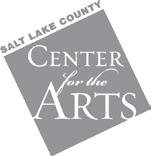
123 West South Temple Salt Lake City, UT 84101 801-533-5626
EDITOR
Megs Vincent
HUDSON PRINTING COMPANY
www.hudsonprinting.com
241 West 1700 South Salt Lake City, UT 84115 801-486-4611
AUDITING AND ACCOUNTING SERVICES PROVIDED BY Tanner, llc
LEGAL REPRESENTATION PROVIDED BY Ballard Spahr Andrews & Ingersoll, llp Dorsey & Whitney, llp Holland & Hart, llp Jones Waldo
ADVERTISING MEDIA & WEBSITE SERVICES PROVIDED BY Love Communications, Salt Lake City
ADVERTISING CREATIVE & BRANDING SERVICES PROVIDED BY Struck, Salt Lake City / Portland
The organization is committed to equal opportunity in employment practices and actions, i.e. recruitment, employment, compensation, training, development, transfer, reassignment, corrective action and promotion, without regard to one or more of the following protected class: race, color, religion, sex, national origin, age, disability, family status, veteran status, sexual orientation, gender identity and political affiliation or belief.
Abravanel Hall and The Janet Quinney Lawson Capitol Theatre are owned and operated by the Salt Lake County Center for the Arts. By participating in or attending any activity in connection with Utah Symphony | Utah Opera, whether on or off the performance premises, you consent to the use of any print or digital photographs, pictures, film, or videotape taken of you for publicity, promotion, television, websites, or any other use, and expressly waive any right of privacy, compensation, copyright, or ownership right connected to same.

With 3,400 vertical feet of sensational skiing on two mountains, 86 years of history, and world-class amenities, discover what’s drawn Olympians and families to this area for decades.
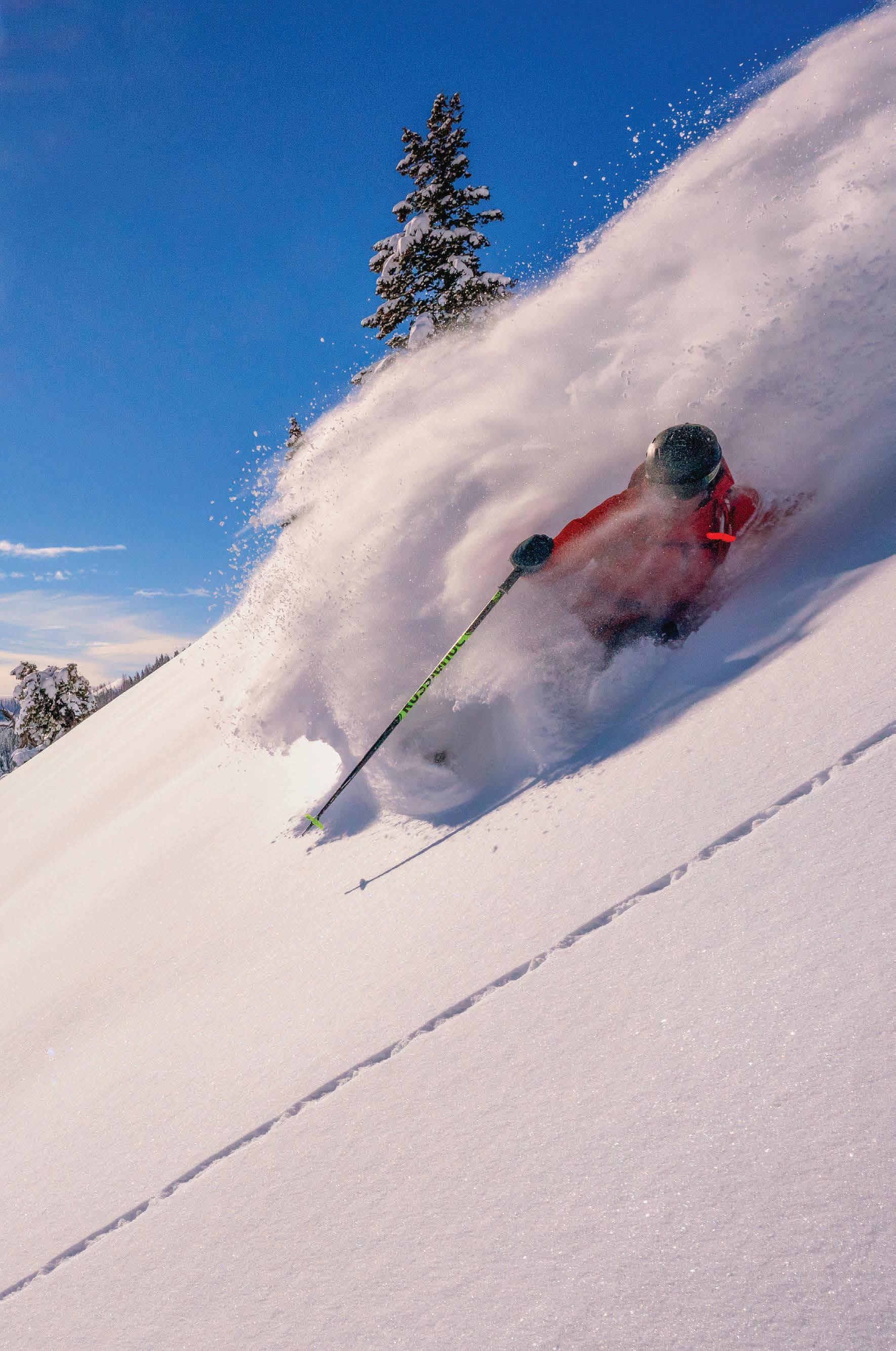

Go electric. Go anywhere. The BMW i4 Gran Coupe and BMW iX Sports Activity Vehicle® arrives with class-defining style and performance, game-changing sustainable materials, and innovative technology. They deliver far-reaching range and efficiency, with all the breathtaking power that define all BMWs. Experience our electrifying performance with a test drive of the Ultimate Driving Machine® today and see why BMW is the new electric standard.

